THE CHRONICLE OF A DEATH (NOT) FORETOLD
A NEW EPISODE IN THE RENEWED AMERICAN-IRANIAN CONFLICT

SEE ANALYSIS on page 8

A NEW EPISODE IN THE RENEWED AMERICAN-IRANIAN CONFLICT

SEE ANALYSIS on page 8
Japanese Ambassador to Hungary Kuni Sato talks to Diplomacy&Trade about celebrations marking the 150th anniversary of diplomatic relations between her country and Hungary, the outlook on economic cooperation between the two nations and about iconic Hungarian and Japanese nationals who have played a pivotal role in shaping bilateral ties. Japan, which is one of the largest investors in Hungary, remains keen to exploit further economic opportunities in Hungary, according to the diplomat.

see articles on pages 10-29




‘Doing now what patients need next’ – figuring out ways to implement this motto at Roche (Hungary) Ltd. is the job of talented innovators at the four divisions (Pharmaceutical, Diagnostics and Diabetes Care as well as the Roche Services & Solutions Operations EMEA) that represent the Swiss international pharmaceutical company in Hungary. They build partnerships with Hungarian patients and the healthcare system’s stakeholders. see more on page 32











































Japan and Hungary celebrated the 150th anniversary of the establishment of diplomatic relations last year. The ‘Land of the Rising Sun’ – our focus country this month – is one of the most important investors in Hungary with corporate investments exceeding EUR two billion, to date. There are about 160 Japanese companies present here, providing jobs for more than 30,000 people. The Focus features an interview with the Japanese Ambassador to Hungary, Kuni Sato who looks back at the events of the anniversary year. Bilateral business relations are greatly assisted by Japanese External Trade Organization (JETRO) that has been present in Hungary for almost three decades and the Hungarian Export Promotion Agency (HEPA) that has recently opened a partner office in Tokyo, while on the regional level, it is CEE Business Media that puts the spotlight on this part of the world for Japanese investors. The role of Japanese urban centers and Japan’s interest in securing maritime trade in Southeast Asia are also topics we cover.
Our international affairs analyst looks at the latest episode in the renewed American-Iranian conflict: the killing of the most famous/notorious Iranian military leader, Qasem Soleimani by American drones and the accidental downing of a Ukrainian passenger plane by Iran. He says Soleimani’s death may lead to the destabilization of the Iranian regime on the long run and may even help Donald Trump’s presidential campaign if the situation does not escalate.
Our business page this month features the Swiss multinational pharmaceutical Roche and how its four divisions use innovative methods to “do now what patients need next.”
The Ambassador of Estonia authors the WittyLeaks column on her perception of Budapest as a ‘winter wonderland’ for ice skating enthusiasts. In gastronomy, we feature the ‘Black Food Festival’, a project started by Hungarian food enthusiasts, which is on an international tour and will arrive in Budapest this March, while the wine page reports that “furmint in February is cool,” as this indigenous variety of the Carpathian Basin takes center this month, promising variety that can delight the senses of beginners and connoisseurs alike.
I trust you will enjoy this issue and we look forward to any comments and suggestions you may have.

Also, don’t forget to check out our website at www.dteurope.com.
Peter Freed PUBLISHER
05 ON THE RECORD
06-07 COMPANY BRIEFS
08 ANALYSIS
New episode in the US-Iranian conflict
10-29 JAPANESE FOCUS
Interview with the Japanese Ambassador to Hungary, Kuni Sato; JETRO; TAKENAKA; AsahiDreher; Japanese powerhouses; HEPA; Toyota; Japan for regional security; CEE Business Media; Suzuki; Hungarian preparations for Tokyo 2020; Bridgestone; Honda
30 WITTYLEAKS
by the Ambassador of Estonia

31 CULTURE
The safety match – a Hungarian invention
32-33 BUSINESS
Roche; Jana
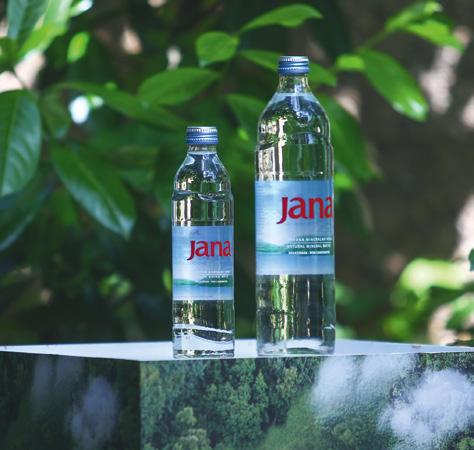
34-35 SOCIETY
36-37 WHAT’S ON Concerts, festivals, events and exhibitions in and out of Budapest

38 GASTRONOMY

Black food festival
39 WINE Furmint in February
PUBLISHER: Peter Freed EDITOR: Sándor Laczkó COPY EDITOR: Joyce Freed PHOTO EDITOR: Dávid Harangozó
SALES & MARKETING DIRECTOR: Tamás Varga DISTRIBUTION MANAGER: Tibor Ocsenás
ADMINISTRATION: Éva Madarász ASSISTANT: Ágnes Rapaport
CONTRIBUTORS: Sándor Laczkó, Tamás Magyarics, Edith Balázs, Réka A. Francisck, Kristi Karelsohn
PHOTO CONTRIBUTORS: depositphotos.com (Cover), Roche (Cover), Honda, Regina Boros, broadway.hu, Jana, depositphotos.com, Budapest Airport, Zsuzsa Pető, Erzsébet Dévényi, Audi Hungaria, Shell, kemenymate/wikimedia.org, Dreher Breweries, Takenaka, MOL Group, FoodEx Japan, Custom Media Japan, Roche (Hungary), Magyar Suzuki Corporation, Zsolt Mészáros, Toyota, Bridgestone, Dávid Nyitrai, Live Nation, Museum of Fine Arts, Gábor Valuska, Krisztina Gohér/MCC, Iván Jaksity, Embassy of Argentina, Manna, Zoltán Miklóska, Robinson, Panificio il Basilico, Embassy of Estonia, Furmint Photo, MTI Photo: Tamás Kovács, György Varga, Zoltán Máthé, Zsolt Szigetváry
In our March issue, Diplomacy&Trade will present a special Focus on Finnish-Hungarian relations as the two countries celebrate the 100 years of diplomatic relations. With Finnish Ambassador Markku Virri, we discuss relations between the two Finno-Ugrian peoples, including political and economic ties, and cultural and civilian cooperation. The Ambassador also evaluates the Finnish Presidency of the Council of the European Union which his country held in the second half of 2019. The Focus will cover Finland’s achievements in environmental issues such as climate protection and clean technologies, as well as Finnish design. We also talk to the Hungarian-Finnish Chamber of Commerce and to the cultural institute Finnagora about their work in Hungary.

The Palace of Arts (Müpa) in Budapest is celebrating the 15th anniversary of its opening this year with renowned artists, extraordinary collaborations and special programs, the CEO of the institution Csaba Káel told the Hungarian news agency MTI.
The start of the new year at one of the region's most important performing arts centers in early 2020 was marked by the staging of Haydn's large, full-house oratory, ‘The Creation’.

All passengers arriving with direct flights from China are required to have their body temperature checked at Budapest Airport, prior to entering the country. The checks are performed by staff from the medical service provider commissioned by Budapest Airport, under the supervision of the Airport Police Directorate. The medical checks are implemented by means of taking the body temperature of passengers, similarly to the procedure already introduced in several other countries. In case body temperature exceeds a certain level, medical staff perform additional checks, and decide on the suspicion of infection accordingly. Based on this, passengers can then either continue their journey, or, in case the suspicion of infection arises, they are transported to one of the medical institutions prepared for this purpose.

Budapest Airport says it is in possession of all equipment and materials required to perform its obligations under applicable regulations and to support the work of the authorities. The airport operator has significant stocks of the necessary protective gear (protective clothing, gloves, masks, plastic shoe covers, etc.) and the equipment and materials required for disinfection. Appropriate isolation facilities are also available.
Data from the 4th quarter of 2019 data indicate that the property market is in a state of change in Hungary. The latest analysis by the Duna House property agency says that for the first time in many years, the majority of residential property indices of Duna House are falling, but the price index of brick and mortar apartments in Budapest is still on the rise. Concrete block indices decreased the most significantly: in the last quarter of 2019, these prices fell both in Budapest and in the Eastern and Western part of the country. Looking at pre-owned apartment indices, apart from increasing prices, a slower turnover speed, reduction of investor activity and the rising ratio of apartments on offer that were bought for investment speak of a changing market environment, the study says.

The idiosyncrasies of the changes in prices may have been driven by the weakest demand of the past three years – as far as the Demand Index is concerned, the last time Duna House measured weaker demand was in 2013. New-build properties should be treated as a separate segment of the property market where – partly because of the VAT change introduced at the end of last year – the figures by Duna House the real estate research center Eltinga are still indicating increasing prices and a brisker demand than on the preowned market. In the 4th quarter of 2019, the average price per square meter of newly built apartments in Budapest was HUF 883,000, which currently equals to cca. EUR 2,640.
"In March 2020, the 15th anniversary of the opening of the Müpa will mark the anniversary of excellence in international art," the CEO said, adding that twenty-two time Grammy Award-winning jazz legend Chick Corea is composing a new work in the honor of Béla Bartók, one of his favorite composers. This will be heard by the Budapest audience in Müpa on March 24. In the first half of the year, renowned artists will perform at Müpa. German singer and actress Ute Lemper will perform on February 13 with her evening show dedicated to Marlene Dietrich. Bellini's ‘The Sleepwalker’, directed by Csaba Némedi and conducted by Riccardo Frizza, is also to be heard in February, featuring the Czech coloratura soprano with Zuzana Markova. On May 7, the Dresden Staatskapelle orchestra conducted by Christian Thielemann, will feature Rudolf Buchbinder as the evening's soloist. Buchbinder will also be on stage the next day with the Dresden Staatskapelle chamber formation. Kirill Petrenko and the Berlin Philharmonic will also visit Müpa, and a musical marathon to be launched jointly with the Budapest Festival Orchestra this year will provide a glimpse into Beethoven's lifework.
The Ministry of Foreign Affairs and Trade of New Zealand reappointed Rezső Sárdi Honorary Consul of New Zealand for the sixth time since he assumed his position 14 years ago.
The Ministry's announcement stresses that Mr. Sárdi has played a valuable role in pursuit of the New Zealand Government's external relations and trade objectives. He has been instrumental in helping strengthening New Zealand's reputation in Hungary in relation to tourism, cultural and educational affairs. During his terms as Honorary Consul, Hungary has been witness to the steadily developing bilateral relationships in every major field, ranging from education, through outgoing tourism, all the way to large-scale investments.
Several high-level delegations have paid an official visits, and the two governments have been negotiating the ratification of the New Zealand Working Holiday Scheme, which has already given the opportunity to 100 Hungarian young people to pursue their studies in New Zealand while carrying out seasonal work during their stay.
Rezső Sárdi says he is delighted to accept his reappointment as Honorary Consul for an additional period of three years.
He is committed to "continuing to facilitate contacts between the two countries, protecting the rights and the security of New Zealand citizens visiting Hungary and knitting together the Kiwi community in Hungary." He has emphasized that the bilateral relations are becoming more intense since Hungary has opened its firstever embassy in Wellington.
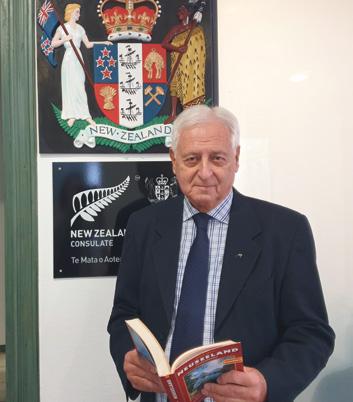
UPCOMING
February
6 New Zealand National day
15 Serbia National day

16 Lithuania National day
23 Japan National day
24 Estonia National day
25 Kuwait National day
28 Egypt Independence day
March 1 Bosnia&HercegovinaNational day
3 Bulgaria National day
6 Ghana Independence day

15 Hungary National day
17 Ireland National day
20 Tunesia Independence day
21 Namibia Independence day
22 Morocco Independence day
25 Greece National day
Hungary's five-time Olympic gold medalist gymnast Ágnes Keleti celebrated her 99th birthday on January 10. She is Hungary’s oldest living Olympic champion. Ágnes Keleti began practicing gymnastics seriously in 1935, when she was 16. Before it was cancelled due to World War II, she was considered a top prospect for the 1940 Olympic Games.
She used forged papers to survive the Holocaust, working as a maid in a factory. In 1946, she won her first Hungarian national championship, a title she successfully defended for the ten following years. An injury kept her out of the 1948 Olympic Games, but she persisted. In 1952, at the age of 31, she made her Olympic debut at the Helsinki Games, winning four medals, including the gold in floor exercise.
As Soviet troops invaded Hungary during the 1956 Melbourne Olympics, Keleti, along with 44 other athletes from the Hungarian delegation, decided to remain in Australia and received political asylum. The next year, she moved to Israel where she is considered the founder of gymnastics. Since 1990, she has spent increasingly more time in Hungary and now lives in Budapest.

Audi Hungaria ended 2019 with high production results despite challenging conditions: last year, more vehicles rolled off the assembly line in Győr, NW Hungary than ever before. In addition, the company produced over 90,000 e-motors in the first year after production started. At the same time, 2019 saw the start of the serial production of the Q3 models with electrified powertrains. In northwestern Hungary, Audi Hungaria remains the largest employer with 12,807 employees.
"I am very proud of the company’s performance and would like to thank our employees for this. We have once again demonstrated that Audi Hungaria is a very efficient company. In times of transformation with regard to digitization, electrification and sustainability, we face numerous challenges. Therefore, we have set the priority for the future to continue to increase our productivity in order to strengthen our competitiveness. In this way, we can continue to offer our employees secure jobs,” the Chairman of the Board of Management of Audi Hungaria Co. Ltd., Alfons Dintner is quoted by a company press release.
The company produced 1,968,742 engines last year, including 1,370,316 gasoline engines, 508,059 diesel engines and 90,367 electric motors. Audi Hungaria has been producing electric motors since 2018, the proportion of which in the total production has risen sharply.
The company has achieved a record in automotive manufacturing. A total of 164,817 Audi models rolled off the assembly line in 2019. Audi Hungaria produced 120,230 Audi Q3; 11,791 coupes and 3,208 roadsters from the Audi TT models. In 2019, 7,302 Audi A3 Cabriolets left the production line as well as 6,986 A3 sedans, the latter produced in cooperation with the factory in Ingolstadt, Germany since March. Series production of the Audi Q3 Sportback started in Győr last summer, and by year end, 15,300 had been built.

In the first days of 2020, PSA group began to produce three-cylinder Turbo PureTech petrol engines at its Szentgotthárd plant in SW Hungary. 350,000 1.2-liter engines, of 100 and 130 hp, are expected to be produced in each year. Being awarded and implementing this strategic investment, the importance of the Szentgotthárd plant among the European PSA Group factories producing power transmission units has been made clear, and in the future, it may become a PureTech production development expert base within the PSA group, the Hungarian Investment Promotion Agency reports.
Peugeot began its operations in 1810, initially in metallurgy, then in 1890, the company created its first petrol car, three decades before Citroen's first model. The two French car brands and their affiliated companies merged in 1976 to form the now well-known PSA Group, which, in 2014, acquired DS, followed by the acquisition of Opel and Vauxhall in 2018. In 2018, the corporate team employed 211,000 people worldwide in more than 400 companies within its consolidation group.
Opel was founded by Adam Opel in Rüsselsheim in 1862, where the company still has its headquarters. Since 1929, General Motors held the majority ownership, then the entire ownership of the German group, for almost 90 years until the 2019 PSA transaction. Opel currently operates nine factories in six European countries, among which one of the most significant is the Szentgotthárd headquarters, which currently employs 818 people.
As a result of the PSA acquisition, the manufacturing and assembly lines of the Szentgotthárd plant, having twenty-seven years of engine manufacturing experience, began manufacturing of 1.2-liter three-cylinder turbocharged EB petrol engines, chosen ‘Engine of the Year’ four times, and EP cylinder heads in January 2020. Engines will be available in 100 and 130 hp versions from Szentgotthárd and will be shipped, besides Opel, to the premium models of Peugeot, Citroen and DS, representing the premium brand of the Group. As a result of the development, the plant is practically replacing its previous production range, so the production capacity can reach up to 350,000 pieces per year. At the same time, the factory has maintained its manufacturing flexibility in order to continue production of conventional engines.

Shell has introduced two new products in the Central and Eastern European market for electric chargers: the company is launching its first fast charging station in Hungary in cooperation with IONITY, a charging network operator, and, at the same time, introducing the Shell Recharge charging station, its own global brand. This allows drivers at to recharge their electric cars at both Shell charging options, a press statement by the company says.

“We are delighted that we are entering a new chapter in the life of Shell's retail business in Central and Eastern Europe. With the introduction of Shell V-Power premium fuels, we have stimulated innovation in traditional fuels in the region, but now we are opening a new era,” István Kapitány, Vice President, Global Retail at Shell said.
The first joint quick recharging station with IONITY is located along the M7 motorway near Lake Balaton, allowing electric cars to take longer journeys from the capital. All four charging points offer up to 350 kW of charging power. Fast chargers can charge a new generation of electric vehicles in 10 to 15 minutes, three times faster than those currently available to motorists.
The first dedicated cargo flight, a Boeing 747 giant aircraft, arrived on January 7, putting BUD Cargo City in operation at Liszt Ferenc International Airport. The world-class logistics hub has been one of the largest airport development projects in recent years, and will now operate as a gateway for air freight in Central and Eastern Europe.

Budapest Airport opened the BUD Cargo City air cargo handling center at the Hungarian capital’s main airport in November last year. The arrival of the first dedicated cargo flight marked a symbolic moment in the history of the airport: the facility has started to operate smoothly, paving the way for Budapest Airport and the Hungarian economy to lead the region, a press release by the management company of the airport stated.
The facility consists of a 21,200-sqm warehouse and office space and an 11,650-sqm forwarding facility, with a huge 32,000-sqm traffic hall. Up to two Boeing 747-8F aircraft with a maximum take-off weight of 440 tons can be served simultaneously in the foreground. The opening of BUD Cargo City increases the cargo handling capacity of Budapest Airport from 150,000 tons to 250,000 tons per year. In 2019, Budapest Airport handled 135,521 tons of cargo.
It is not only cargo traffic that is increasing at Liszt Ferenc International Airport, which is not only a strategic facility of key importance for the country, but also the aerial gateway to Hungary. Over the past two years, Budapest Airport spent more than HUF 50 billion on developments. In 2019, new projects focused on digital innovation and the enhancing of the travel experience, for all passengers.
Duna House Holding Plc. – on public notice obligation of the Minister of Finance – has published an extraordinary notice saying that its 100% subsidiary, Metrohouse Franchise S.A., signed an agreement in Warsaw on January 7, 2020 to acquire 100% ownership in Alex T. Great Sp. z o.o. (ATG). The transaction was successfully completed on the same day. The purchase price was PLN 4.3 million (HUF 339.8 million at current exchange rates).
The acquisition allows Duna House to strengthen its position on the Polish market and increase its volume of brokered loans by approximately 60% in Poland. The company, listed on the Budapest Stock Exchange, is the largest residential real estate broker of East Central Europe.
ATG is a significant loan broker on the Polish market, its volumes totaled PLN 676 million in the first three quarters of 2019 (HUF 52.8 billion at current exchange rates). The acquired company specializes in financial brokerage that includes a wide range of products, from mortgage loans to business services and insurance.

A new chapter begins in the life of Budapest Airport from 2020. The first phase of a new, 11,500-square-meter facility serving passengers and providing the same level of comfort as the terminals has opened. The modern Pier 1 – to be fully completed by the summer of 2020, replacing the earlier outdoor boarding gates – is the first step in a cooperation between Budapest Airport and the Hungarian government, and also forms part of the long-term development of the airport, a press release by the airport management company says. With the new facility, the floor space serving arriving and departing flights will be nearly quadrupled, from 3,000 square meters to nearly 11,500 square meters. Pier 1 is a heated and air-conditioned, single-story building with an internal height of 5.2 meters. The hall will have eight pedestrian boarding gates (walk-on-walk-off gates), which will be directly connected to the aircraft stands, i.e. passengers will be able to access the aircraft directly from the building. The hall will also have six bus gates. The central hall will feature resting and waiting areas, with a food and beverage outlet, three large capacity bathroom blocks and a smokers’ terrace for the convenience of passengers. The connection to Terminal 2A will be implemented in such a way that passengers will not leave the comfort of the building after check-in; they will reach the approximately 120-meter long, spacious, heated/air conditioned corridor leading from the main terminal building to the boarding hall via a connecting building equipped with escalators and elevators. The approximate construction cost of the new pier is HUF 8.3 billion (cca. EUR 25 million), which is financed entirely by Budapest Airport Co. Ltd. Execution works commenced in July 2019, and, in the interest of the earliest possible completion, continued throughout the summer peak season, without disturbing the regular, daily traffic of the airport.

Duna House Group entered the Polish market with the acquisition of Metrohouse Franchise S.A. in 2016., enhanced its presence with the purchase of GoldFinance in November 2018, followed by the current, third acquisition in the country. The merger with ATG means a significant next step in strengthening its position on the Polish loan market. After the transaction, over 700 credit experts will operate under the group in Poland, and will continue cooperation with the group’s local real estate broker network, Metrohouse. Duna House Group will now serve its clients with over 120 Metrohouse and Gold Finance offices and over 1,300 credit experts and real estate agents in Poland.
Duna House Group closed the year 2019 with profits in Poland and remains committed to the Polish market. With the acquisition of ATG, increased profit after tax is expected from the first quarter of 2020.

SPAR Hungary Trade Ltd. and the Trade Employees' Trade Union (KASZ) have agreed on wage development for 2020 for SPAR staff in Hungary, according to a press release by the company that operates a retail trade chain in Hungary. By convention, the SPAR Loyalty Program for employees will continue to exist. What is new is the extension of the 13th-month benefit system and the fact that the employee discounts will increase to 10% from February 1 at the initiative of KASZ. The company will implement the wage development exclusively from its own resources. SPAR Hungary says that it will continue to invest in the construction of new stores – along with the creation of new jobs – and the renovation of existing stores in 2020: this year's investment budget will exceed HUF 31.6 billion by the Austrian family-owned company in Hungary.
Wizz Air, a low-cost airline with Hungarian background, posted record-high after-tax profit of EUR 21.4 million in the third quarter that ended on December 31.
According to a statement of results published on the company's website. Wizz Air increased its revenue by 24.6% to EUR 637 million during this period, while passenger traffic increased by 23.2% to approximately 10 million. Ticket revenue increased by 15% and revenue from the sale of various additional services increased by 36%.

Operating profit improved by 25% to EUR 131 million and aftertax profit by 42% to EUR 21.4 million. The fact that revenue per passenger-kilometer increased by 2%, while costs decreased by 2% may also have contributed to the good results.
The Hungarian national public transport bus company Volánbusz Co. Ltd. will buy fifteen new high-capacity buses, worth nearly HUF 1.2 billion, from Volvo Hungária Ltd. The buses are expected to be available from May, according to an announcement by Volánbusz to the Hungarian news agency MTI.

The vehicle purchase contract was signed on January 21 by Volánbusz Co. Ltd., Chairman and Chief Executive Officer Ilona Dávid and Volvo Hungária Ltd. Managing Directors Viktor Dávid Illés and Mariola Wdowik.
The new Volvo 8900 buses will run on busy suburban and regional lines. The long solo, non-articulated, three-axle, 53-seat vehicles are low-entry, barrier-free and wheelchair-accessible. The new buses are equipped with the environmentally friendly EURO 6
engine, high-performance air conditioning, Wi-Fi and one USB connection per seat.
The low weight of the aluminum and steel body makes the Volvo 8900 more economical and environmentally friendly to operate. Service and maintenance will be free of charge for Volánbusz within 24 months of delivery.
Volánbusz plans to purchase 3,930 buses between 2019 and 2022, allowing 60% of the company's fleet to be replaced. The rejuvenation of the fleet is part of measures taken to implement sustainable public transport and as part of Hungary’s bus strategy. The company plans to lower the average age of its vehicles to 8.99 years by the end of 2022 and to 5.73 by the end of 2031, according to their press release.
The killing of Qasem Soleimani by American drones had been planned by the Trump administration for some time. Donald Trump did not believe in the wisdom of making compromise with the regime in Tehran, and claimed that the Joint Comprehensive Plan of Action (JCPOA) of 2015, which limited and froze the Iranian nuclear weapons program was flawed. It did not address outstanding regional issues, among others, Iran’s endeavor to become a regional hegemon of sorts. To be more precise, it did not address Iran’s material, logistics, and diplomatic support of such groups as the Hezbollah in Lebanon, the Hamas in the Gaza Strip or the Huthis in Yemen – to name just a few of the (para)military forces which were threatening the perceived and/or real interests of the U.S. and its major allies in the region (foremost among them Israel and Saudi Arabia). Donald Trump as President left the JCPOA and initiated the policy of maximum pressure on Iran. Tehran was fighting back; it was likely behind the attacks on tankers in the Gulf and on Saudi oil facilities in 2019. American intelligence strongly believed that the mastermind behind Iran’s regional strategy was the head of the Quds Forces (i.e., Qasem Soleimani), which constitute the

elite units of the Revolutionary Guard. The Trump administration declared the Revolutionary Guard a terrorist organization, and given the relentless fight of successive U.S. administrations in the past decades against transnational terrorism, it could have even been considered a shot across the bow: after all, the Guard and its subsidiary would be a ‘legitimate’ target for the U.S. forces.
The assassination of Major General Soleimani was meant to send several messages to various capitals. First and foremost, naturally, to Tehran: the Trump administration means business, and is willing to deter and/or prevent any ambitious Iranian attempt to achieve regional hegemony. Another message was likely to be sent to Baghdad, or, more precisely, to the pro-Iranian (predominantly Shiite) forces in Iraq, that the U.S. would not tolerate a too cozy relationship with its neighbor in the east. A third message may have been intended to reassure Israel, Saudi Arabia and other smaller states in the region that the U.S. was willing to protect them against the maneuverings of the Tehran regime. And, finally, a message was aimed at serving a warning to outside great powers
which are trying to get a foothold in the Middle East where Washington still considers itself as the final arbiter in the conflicts, and would not welcome others meddling with affairs in the region. However, the question is whether President Trump and his advisers have been thinking through the potential consequences of the drone attack internationally and domestically alike, or was it another manifestation of the President’s signature transactional policy or, in a broader context, the short-termism of a number of U.S. actions in the past few decades.
The death of the most famous/notorious Iranian military leader, at first, seemed to strengthen the position of the Iranian leaders. By definition, such an event tends to unite the nation of the victim, even if he himself and/or the regime is not enjoying universal support among the people. This sentiment, however, evaporated rather quickly in Iran, when it turned out that the authorities lied to the people for days about the downing of a Ukrainian aircraft. Events took a dangerous turn for the leaders of the country, including Ayatollah Khatami, the Supreme Leader, who had previously been largely spared
of the criticism against the government at large. Pent-up anti-government feelings, which had been fueled – partly – by a deteriorating economic situation, caused to a large extent by the ’maximum pressure’ exerted by the U.S. on Iran, surfaced and resulted in a series of demonstrations, some of which ultimately turned violent. In other words, Soleimani’s death may lead to the destabilization of the Iranian regime in the long run, instead of uniting the people around their religious and secular leaders.
On the other hand, Donald Trump may benefit from the elimination of one of the public enemies of the U.S. Though public opinion is rather split as for the wisdom, legality, constitutionality, and strategic gains of the action, the Republican base overwhelmingly supports the President’s decision, and the Democrats have been put on the spot to a certain extent because condemning the destruction of one of the most avowed enemies of the country may not play itself out well even among some of their voters. Therefore, they have resorted to legalistic arguments, first and foremost regretting that the President had not consulted with their Congressional leaders before ordering the drone attack. If the death of Soleimani does not lead to a major conflagration in the Middle East requiring a larger American military ’footprint’ over there, President Trump may be able to campaign on strong and resolute American leadership abroad – this policy always appeals to large segments of American society, especially in such crucial regions of the presidential (and congressional) election as the Midwest and the South.
In Gabriel Garcia Márquez’s novel (‘The Chronicle of a Death Foretold’), the two murderers, Pablo and Pedro Vicario are ultimately acquitted by the court, and no one is punished for the death of Santiago Nasar (whose father was of Arab origin). At the moment, judging from the scale and manner of the Iranian missile attacks against military bases used by Iraqis and Americans alike, and in which – allegedly – no was killed and even the material damage was limited, Tehran does not intend to escalate the situation for good reason. A potential (all-out) war with the U.S. would likely to almost be a turkeyshoot on the American side, and the Iranians (Persians) have not survived in this conflictridden place in the world for nothing. Their shrewd policies and rational calculations are bound to prevail over the hotheads, and the most likely outcome will be the continuation of asymmetrical actions by the Iranians and their proxies against the Americans and their allies. That is, the thousand-year old patterns will continue to define the geopolitics of the greater Middle East in the foreseeable future.
Tamás Magyarics is a foreign policy analyst




















With Japanese companies among the pioneers that established a presence in Hungary after 1989 and overall Japanese investments exceeding EUR two billion, Japan ranks as the most significant source of capital inflows from Asia. Hungary and Japan, which marked the 150th anniversary of diplomatic relations last year, are set to further strengthen their ties in all areas of cooperation from the current, very strong base, Japanese Ambassador to Hungary Kuni Sato tells Diplomacy&Trade in an exclusive interview.
 BY EDITH BALÁZS
BY EDITH BALÁZS
The year 2019 marked a special milestone in Japanese-Hungarian ties: the two countries celebrated the 150th anniversary of establishing diplomatic relations with a plethora of political and cultural events in Hungary and Japan. Celebrations in Hungary began with an Ikebana demonstration, attended by the Hungarian First Lady, Dr. Anita Herczegh. A series of cultural programs followed, concluded by a hugely successful Wadaiko (Japanese drums) concert, with Dr. János Áder, President of the Republic of Hungary, and the First Lady joining as Guests of Honor. “One of the highlights of the events was the visit by Her Imperial Highness Princess Kako, who made her official debut visit to Austria and Hungary. Still in good memory of many Japanese and Hungarians is the scene where she was greeted by President Áder and the First Lady in the Japanese national costume, the kimono,” the Ambassador recalls. The princess met with Dr. László Kövér, Speaker of the National Assembly, and members of
the Hungary-Japan Parliamentary Friendship Association. She visited the Pannonhalma Archabbey, the Bábolna national stud farm, the Herend porcelain manufactory and the Tihany Abbey. “These occasions provided ample opportunities for her and for many Japanese to understand the history, tradition and culture of Hungary. The Princess, together with István Tarlós, then Mayor
of Budapest, attended a light-up of the Elisabeth Bridge, commemorating the 150th anniversary,” the Ambassador notes.
The anniversary coincided with the beginning of a new era in Japan, the Ceremony of the Enthronement of His Majesty the Emperor of
Japan. President Áder, together with the First Lady, participated at the event and also took the opportunity to explore cultural sites as well as to visit a hydrogen station in Japan.
Last year also marked the visit of Prime Minister Viktor Orbán to Japan where he met his Japanese counterpart Shinzo Abe. Orbán hailed Japan for placing its trust in Hungary at the time of the country’s transition to democracy and a market economy. “I’m a veteran in politics and in 1990, I was present in the Hungarian parliament when we had to transform Hungary. I clearly recall how distrustful the world was about whether we would succeed; there was only one country that showed not even one shred of distrust and this was Japan. Japan did not immediately ask for its loan to be repaid. Instead, it extended new credit and brought new developments to Hungary, thereby helping the country to survive that extremely difficult economic situation,” Orbán said in Tokyo last December at a joint press conference with Japanese Prime Minister Shinzo Abe.
The two leaders reconfirmed the importance of cordial, long-standing relations between the two countries and agreed to further strengthen cooperation, looking ahead to the future. They specifically discussed such areas of cooperation as the economy, politics, security, science and technology, culture and education, Ambassador Kuni Sato notes.
Osamu Suzuki’s 1988 decision to invest in Hungary opened a new chapter in economic relations between the two nations. “That time, Suzuki took a major economic and political risk with its 200-million-dollar greenfield investment, since –as opposed to the U.S. or other western countries –Japan had significantly less experience concerning trade and, in general, economic relations with Hungary, which had just begun the complex process of transition to market economy. The trust of the company in Hungary’s future, the famous creativity, innovative thinking, and working capacity of the Hungarian people has proven to be true and has paid off multiple times during the last 27 years,” Dr. László Urbán, deputy CEO at Magyar Suzuki, said in December 2019. Suzuki, whose auto manufacturing operation called Magyar Suzuki started production in 1992, was followed by many other Japanese enterprises over the past three decades and today, the number of Japanese
In 1869, Japan and the Austro-Hungarian Monarchy signed a friendship, commerce and navigation treaty. The agreement was signed at a time characterized by fast-paced modernization and industrialization when both countries were experiencing a great transformation of society. A number of visits and encounters between famous Japanese and Hungarian nationals have helped mold bilateral relations over the past century and a half. It was in 1869 that Hungarian ethnographer János Xantus participated in an Austrian-Hungarian expedition headed to East Asia and spent two months in Japan. The objects and materials he collected during his stay became veritable treasures for the Hungarian Museum of Ethnology, of which he later became the director. He observed in his report that Japan was the most advanced country in East Asia, and that there “people walk with their head straight up, and women stride freely on street.” In 1887, a Japanese samurai called Sanshi Tokai met Lajos Kossuth, who was in political exile at the time in Turin. Tokai had travelled to the United States on a scholarship, became a journalist and writer, and started writing passionately about the life of Kossuth. His work piqued the interest of Japanese readers, who wanted to know about what was happening in Western countries. “There are no written records of what they actually discussed in person, but one can imagine the two men, samurai and revolutionary, talking about the future of Japan, Hungary and that of the world, perhaps over a cup of espresso, a glass of Tokaji, or a bottle of Japanese sake. The strange encounter between Tokai and Kossuth was not recorded in an official page of the diplomatic relations nor is it widely known. It, however, weaved one of the bonds of our long-lasting friendship,” the Ambassador remarks. Juichiro Imaoka, born one year after Tokai met Kossuth, studied German at the Tokyo University of Foreign Studies and as a German translator, he helped Hungarian ethnographer Benedek Baráthosi Balogh, who visited Japan on a research trip. They met in 1914 and their encounter ignited Imaoka’s interest in Hungary and propelled him to learn Hungarian. Imaoka spent nine years in Budapest starting from 1922, wrote about Japan in Hungarian newspapers and gave lectures. His talks were so popular that posters advertising them said, “He will talk twice so that the place will not get overcrowded!” He often went to the Central Café, a point of congregation for artists at the time. He had his “usual” table, and would reply to a request for meeting, by writing “you can find me at Central Café normally from one o’clock to four o’clock in the afternoon.” Imaoka devoted his life to strengthening bilateral relations. Back in Japan, he translated Hungarian literature, and published the first Hungarian-Japanese dictionary. Princess Kako visited the Central Café, saw a plaque hung ten years earlier in memory of Mr. Imaoka.
companies present in Hungary exceeds 160, giving work to tens of thousands of people.
“Since 1989, Japan has been the largest investor among Asian countries in Hungary. Last year, Toray announced the construction of a factory producing battery separator films in Nyergesújfalu. Tire manufacturer Bridgestone, car parts producer Denso, GS-Yuasa, which specializes in car batteries, and spring-maker NHK Spring opened or expanded their production sites in Hungary. Hungary remains one of the attractive destinations for Japanese investors,” the Ambassador says.

The EU-Japan Economic Partnership Agreement, which entered into force in February 2019, offers a variety of benefits and possibilities for boosting bilateral economic relations, the Ambassador stresses. For example, the export of Hungarian honey to Japan increased by over 40% from the


previous year in 2019 and it is expected to grow more as the 25.5% tariff on honey products from EU member countries to Japan will be further reduced and eventually eliminated in seven years. Hungary ranked as the 5th largest exporter of honey to Japan after China, New Zealand, Canada, and Argentina last year. Key industries driving Hungarian exports to Japan include agriculture, food, electrical parts, machinery and chemical products.
The exchange of views and know-how among think-tanks, scholars and students is another area of important interaction between the two countries, the Ambassador says. Japanese professors and researchers who visited Hungary to give talks on Japan and the challenges it faces returned to Japan with first-hand experience on Hungary and the country’s socio-economic situation.
The upcoming summer Olympics, hosted by Tokyo, will undoubtedly be the sports event of the year globally. Under an arrangement, the Hungarian Olympic Federation signed with the Japanese Olympic Committee and Tochigi Prefecture, during preparations for the games, the Japanese side offers Hungarian athletes access to sports facilities, the possibility to train with local partners and get acquainted with the sports technology and the competition venues as support for the Hungarians. She adds that a variety of more municipalities such as Koriyama city have declared to be hosts for Hungarian athletic teams during the Games. They work hard to help athletes prepare and reach their best condition. “There will be numerous close encounters that will weave new links in our bilateral relationship,” the Ambassador concludes.
booth to help Japanese small and mediumsized companies or invites overseas buyers to Japanese exhibitions. JETRO offers various business opportunities to Hungarian suppliers in the automotive industry in Hungary. The next event it holds is the 13th parts procurement business meeting (reverse trade fair) on February 26. Japanese companies will exhibit not only from Hungary, but also from elsewhere in Europe. At this business meeting, Japanese firms looking for suppliers of parts and materials will exhibit the materials, parts and services they wish to procure. “It is an event where Japanese companies have the chance to negotiate with Hungarian firms that offer goods and services required by Japanese companies. Hungarian companies already have a network with German automakers, and the event is attractive to Japanese companies seeking business opportunities in the European market,” she explains.
The Japan External Trade Organization (JETRO) established an office in Budapest in 1991. And, according to the General Director of the office, Ms. Akiko Okumura, they have been receiving requests for investment consultation from Japanese companies non-stop ever since.

“JETRO's strengths lie not only in its networks overseas, but also in every prefecture in Japan. Japan has many industrial clusters in local cities other than large cities such as Tokyo and Osaka. We support investment consultations received from local SMEs in cooperation with domestic offices,” the General Director tells Diplomacy&Trade. JETRO's role is not limited to supporting company establishment. Even after a company enters the market, JETRO’s assistance includes searching for new business partners and suppliers as well as providing information on labor, tax and legal affairs. In addition to providing these types of information, annual surveys are conducted on investment-related costs such as labor costs, utility costs, rent, issues faced by Japanese companies and prospects for future operating profits. The results are disclosed on the organization’s website. This information is used not only by companies considering investment but also by Japanese firms that have already entered the market, she says. “The companies that invest in Hungary first consider where to set up their bases in Europe, and make their decision based on comparisons
within Central and Eastern Europe. JETRO
Budapest's role is to inform Japanese companies that Central and Eastern Europe has achieved high economic growth in recent years, and to explain the appeal of Hungary, based on objective data,” the General Director points out.
She points out that in Hungary, some distributors experience increasing demand for Japanese food items, as well as for Japanese spirits.
“Therefore, we continuously try to contribute to fulfilling both this demand and those of Japanese farmers, manufacturers intending to export, by providing business matching opportunities either in Japan or in Hungary.” As an example of what sort of information is solicited from the office, she mentions the Japanese shoyu maker company Horaiya that started to export their products for the first time through JETRO’s Hungarian buyers invitation program and their new partner, a Hungarian premium food distributor and retail company could extend its Japanese quality food items selection, with e.g. miso, amazake (fermented rice drink), shoyu. After the first shipment, Horaiya suffered serious damages in a typhoon last October. Since the continuation of exports was a major
motivation for them, they worked very hard to restart their factory, and the second export shipment was successfully realized. “I am very happy to hear that the inquiries from Hungarian buyer became a major motivation for Japanese company’s business continuity,” she adds.
Another of JETRO's jobs is to assist with the establishment of business bases for companies entering Japan for the first time. Through the ‘Invest Japan’ program, JETRO offers foreign investors abundant information on all aspects of doing business in Japan by providing expert consultation and offering free temporary office space in major business areas across Japan. JETRO Budapest has actively supported Hungarian IT and biotech companies to do business in Japan in the framework of this program. “JETRO Budapest has been engaged in organizing business missions to Tokyo since 2017. Last year, there were four Hungarian companies participating in the Digital Innovation CEE Entrepreneurs Delegation to Japan. Since JETRO Budapest started to promote the ‘Invest Japan’ program in Hungary, two Hungarian companies have established their offices in Tokyo. JETRO Budapest screens potential companies by attending seminars to introduce its services to potential clients in Hungary,” the General Director highlights. JETRO also recommends using exhibitions as an effective way to find new business partners. It sometimes sets up a Japanese
The General Director highlights that “most of the Japanese manufacturers in Hungary operate their factories in the countryside, and we keep close contact with them, so, from time to time, we visit the countryside. Apart from these visits, we also try to maintain good relationships with the local governments and local trade or investment public agencies in county seats. Japanese companies are mainly concentrated in the central and northwestern parts of the country. We want to learn about the local conditions and the investment environment in other parts of the country, as well, so that we can offer these places as potential locations for the Japanese companies planning to establish their manufacturing site in Hungary. These regions can be especially attractive now that companies have to deal with the problem of labor shortage, especially in the manufacturing sector. Another type of activity that takes JETRO to the countryside is seminars organized for local companies with the support of our partners, like the National Association of Entrepreneurs (VOSZ), for example. “In these seminars, we introduce the activities of JETRO, explain about our Invest Japan program, the Hungarian-Japanese economic relationships and about the trends and activities of the Japanese companies operating in Hungary. We have held such seminars in Zalakaros and Hódmezővásárhely”, she adds.
On a personal note, Akiko Okumura says that since she arrived Hungary, she has been surprised to see that there are so many young people who are interested in Japan and the Japanese language. “In addition to students who have studied the language at school, there are young people who have gained a high level of language proficiency by themselves, by using various contents on the Internet. For many of them, their interest in Japan comes from games and the hand-drawn and computer animation ’anime’. The Millennials and Gen Z, who have common experiences and tools, such as IT, games, and animation, will be the center of future business and I look forward to deepening the connection between the two countries in various fields.”



A large number of Japan’s most prominent landmarks and an impressive number of high-rise buildings both in Japan and around the world have been created by Takenaka Corporation. It is one of Japan's "Big Five" general contractors providing services in architecture, engineering, and construction. Takenaka has a long and storied history that is rich in tradition and spans more than 400 years. It is still a family-owned business managed by the 17th generation descendant of the founder who began the business in 1610.
Takenaka has constructed some of the most important buildings in Japan, including Tokyo Tower, which is a radio, telecommunication and observation tower built in the capital’s Minato Ward. With a height of 333 meters, it is one of the tallest steel structures in the world and the second tallest structure in Japan. For safety reasons it is painted white and orange. In 1953, television
broadcasting began in Japan, and the Kanto region needed a tower that would provide frequency transmissions. With great care having been taken in planning earthquake resistance as much as possible, Takenaka Corporation began work in 1957 with 400 workers a day committed to the edifice, which was built of iron and scrap metal from discarded tanks. Since opening in December 1958, Tokyo Tower has
The name of the skyscraper ‘Abeno Harukas’ comes from an old Japanese word ‘harukasu’, meaning "to brighten or clear up."
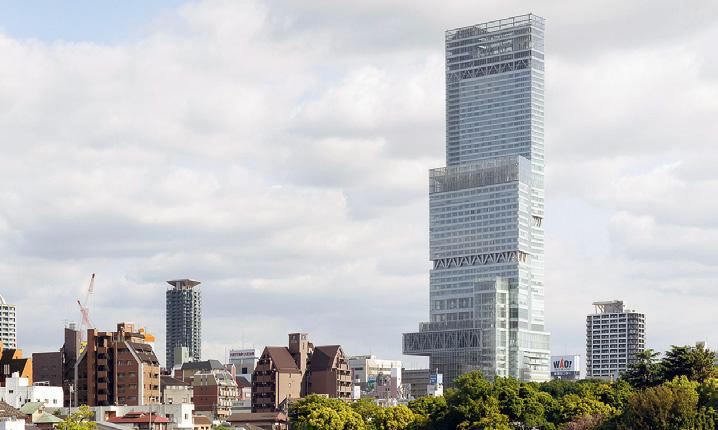
The Abeno-Tennnoji railway station, which occupies the podium of the building, is a high-density hub where the number of passengers exceeds 70,000 a day. Abeno Harukas connects the metropolitan railway network to a high-density urban complex, incorporating a department store, art museum, school, hospital, office, hotel, observatory and rooftop gardens. In this compact and dense complex, the daily activities of 110,000 people energize not only the area, but also the metropolitan zone along the railway network extending from the tower. Its reconstruction began in January 2010, and the building reopened in March 2014. It is 300 meters tall and has 62 floors, making it the tallest building in Japan.
MOL Campus Budapest will be the most innovative and greenest office building in the Hungarian capital and could be a forerunner of the office of the future. The 28-story (plus ground floor) tower and its podium will form a unique single, vertical campus. The 98,000-square-foot building, accommodating approximately 2,500 employees, will stretch to a height of 120 meters. The new headquarters is expected to be completed by 2022. The plans for the building were made by one of the world's most renowned architectural studios, Foster + Partners, together with its Hungarian partner, FintaStúdió. The Hungarian oil and gas corporation, MOL has selected the construction company Market Építő Zrt. To complete the project using Takenaka Europe GmbH’s Hungarian Branch in an advisory capacity. Setting a new benchmark both for Budapest and Hungary, the design of the building makes the most of its urban context to drive a sustainable response. The MOL Campus seeks to preserve live-work relationships as part of the urban experience, where people are able to walk o r cycle to work. All occupants have a direct connection to the external environment providing fresh air, daylight and views. The building aims to obtain both LEED and BREEAM qualifications. The office building is expected to feature 90% natural light thanks to huge glass surfaces and will be powered in part by solar panels, and MOL has also committed to using 10% recycled or locally sourced materials for its interior design.
received more than 150 million visitors and become an iconic landmark, particularly at night.
Since 2009, Takenaka has been a member of CTBUH (The Council on Tall Buildings and Urban Habitat: the world's leading resource for professionals focused on the inception, design, construction, and operation of tall buildings

and future cities). The company has built more than 40 buildings higher than 150 meters, including Abeno Harukas, which is Japan’s tallest building. This skyscraper received the Award of Excellence in 2014. In addition to architecture in Japan, Takenaka has constructed first-rate buildings all around the world. Among these, Capita Green in Singapore won the "Best Tall Building Asia & Australasia" title in 2015.
Capita Green
Capita Green is located within Singapore’s central business district in close proximity to the extended downtown Marina Bay. The building is designed like a plant growing towards the sky. Green living vegetation covers 55% of the surface of its façade, giving the landmark its iconic appearance. Its innovative double-skin façade features an outer layer of frameless glass and an inner envelope of double-glazed floor-to-ceiling glass that reduces solar heat gain by up to 26%. At the top of the tower, a petal-like structure serves as a wind scoop to draw in the cooler, cleaner air from above and channel it though a cool void that penetrates the full height of the building delivering fresh air to tenants.
































The history of Dreher Breweries dates back to 1854 when local brewer Peter Schmidt produced his first beer in Kőbánya. Antal Dreher, dubbed the ‘King of Beer’ , bought Schmidt’s brewery eight years later and turned it into an iconic establishment.
Antal Dreher was a revolutionary figure in the history of beer. In 1841, he unveiled a new style of beer that combined the crispness of lager with the paler hues of the English ale, called ‘Lagerbier’, an endeavor that caught the attention of Austrian Emperor Franz Joseph I. The beer required a steady, cool temperature for maturation and storage; this gave it the name lager, which in German means storehouse or warehouse. In 1862 Dreher purchased the Kőbánya Brewery Company and by the turn of the 19th century, he was the 5th richest person in Hungary, according to Forbes. The company survived the ravages of two world wars, the nationalization drive of the Communist era and acquired rights to the name Dreher in 1997 to become Dreher Breweries.
Kaizen and kando
The 2017 change of ownership (acquisition by Japan’s Asahi Group Holdings) and management brought a new philosophy to Dreher Breweries. Along with the new strategy and the philosophy of ’From Dreher to Dreher’, the company is focusing on premiumization, while combining its traditions with modernity and innovation. “We continue to produce beer of ever higher quality and we have introduced a new product, the Japanese Asahi Super Dry beer. Although, Japanese colleagues visit us regularly and the parent company monitors processes at Dreher, our cooperation with them focuses on production, while other issues like marketing, sales, or HR are fundamentally handled by the European and local management,” General Manager Gábor Békefi tells Diplomacy&Trade.
Kaizen, the Japanese business philosophy of continuous improvement of working practices and personal efficiency, is at the core of operations in Kőbánya, and management seeks to raise the quality of production and other business areas, the executive says. “Kando, the feeling of deep satisfaction that we get as brewers from exceeding consumer expectations by providing the highest quality, is also very much characteristic of Asahi.”
The General Manager points out that the beer industry’s growth in Hungary has slowed to a one-digit rate in 2019 compared to 2018.
“However, we still see dynamic growth of over 20% in the sales of premium beers and Hungarian consumers are very much open to innovative ideas and products. The market is stable but one should bear in mind that we had a very rainy in May 2019, which had a negative impact on sales while the three summer months were not much better, sometimes worse than in 2018, which is important because the bulk of beer sales is concentrated in the warm months of the year.”

The Asahi Group is dedicated to strengthening its position on the Hungarian market. According to Gábor Békefi, this means that Dreher should increase production and improve quality to be able to show growth in the premium and medium-priced category. “We are doing well in those categories. For instance, we have successfully renewed the ‘Dreher Gold’ brand, and sales now show double-digit growth.”
Dreher Breweries was the first company in the Hungarian beer industry to publish a sustainability report in 2010. The General Manager notes that one of the most important aspects in this respect is responsible alcohol consumption. “This is where we believe we can do a lot. Responsible beer consumption is part of a sustainable lifestyle and plays an increasingly important role in our society. Promoting this notion is based on many factors, ranging from communication to adjusting our portfolio by including more alcoholfree products and involving young people in responsible consumption programs.”
Another area of focus is improving energy efficiency and Dreher Breweries have a several investment projects that serve this purpose.
“In terms of waste management, we are doing well on the Hungarian market: a large portion of our products comes in returnable
bottles or in cans that can be collected and reused indefinitely. Since one of the main ingredients of beer is water, we strive for responsible water management regarding both our natural and social environment.” On the social level, the management is aware that further measures are needed to improve employees’ work-life balance. “For instance, we would like to introduce a ‘home office policy’ this year to make working hours more flexible for some employees. There are several projects underway in the brewery in order to create better conditions for workers,” Gábor Békefi notes.
the importance of both Antal Dreher and the brewery for the district. Simultaneously, the section of the road in front of the brewery was re-named Antal Dreher Road, making us the only brewery in Hungary to be located on a road named after the founder. All this means that the heritage of Antal Dreher is of great importance, not only for us but for the broader public as well,” Gábor Békefi explains.
To celebrate the anniversary, the company erected an in-house exhibition to showcase 165 years of history with photos and other relics, some of which were displayed for the first time. For a weekend, the gates of the brewery were opened to the public, the factory organized a guided tour of the premises and a tasting of beers brewed for this special occasion. “In addition to displaying the key objects of the past 165 years, we tried to connect the past with the present by way of presenting the iconic Dreher product posters of the 1930s. We asked young, fine and applied artists to reinterpret these old posters for our modern age. We received over 300 exciting entries and the winning items are now modern Dreher posters that have been displayed in a manufacturing hall restored to its old glory for this occasion,” he adds. The company prepared a special gift box for the anniversary, containing two cans with the photo of Antal Dreher and the silhouette of the brewery.
Dreher Breweries marked the company’s 165th anniversary last year with a series of celebrations both within and outside the company. “The local government awarded honorary citizenship to Antal Dreher posthumously, which shows
“The two books that we have recently published are also close to my heart. One of them, depicting the history of Dreher Breweries, is an authentic overview of the past 165 years, while the other one is a collection of 165 anecdotes from the 165 years that bring the whole story closer to the people. A documentary video was also shot in cooperation with the local community and the district municipality about the role of the Brewery in this Kőbánya district and the Hungarian economy,” the General Manager highlights.






Car shown is the Honda e Advance Pack in Platinum White Pearl – Economy & Emissions figures: Power consumption in kWh/100: combined 20-18; CO2emission combined (g/km): 0. Efficiency: A+. The Honda e is a battery electric vehicle requiring mains electricity for charging. Zero emissions while driving. Electric range figures may not reflect real life driving results, which will depend upon a number of factors including the starting charge of the battery, accessories fitted (post-registration), variations in weather, driving styles and vehicle load. Power, emissions, fuel consumption and range data is preliminary data only and may not reflect the official (or final) figures for the production vehicle. This data is provided for information only and you should not rely on it for comparability or other purposes – final/official figures will be made available prior to any customer order.



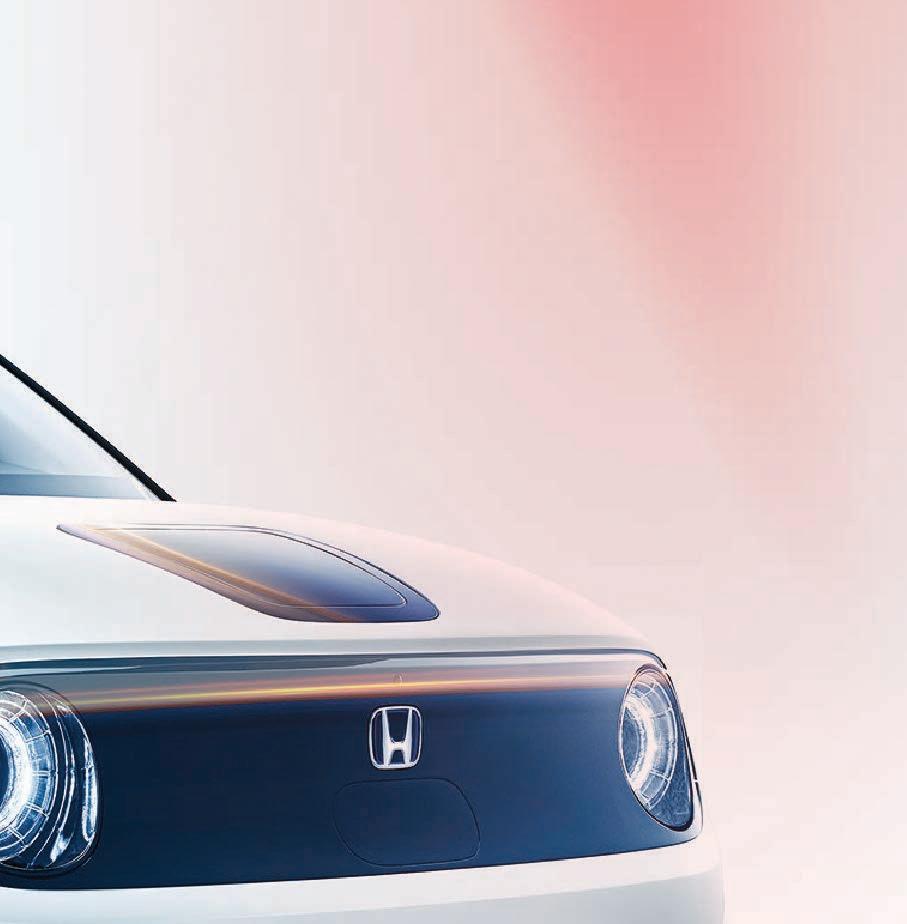



Boasting the world’s third-largest economy, Japan stands out as an economic powerhouse in the Asia Pacific region despite its relatively small size and the lack of natural resources such as oil, gas or iron. The engines driving the nation’s economic expansion are the multitude of local companies with advanced technologies as well as a range of highly developed cities with high concentration of academic and research institutions, advanced R&D capabilities and corporate clusters. Coupled with a uniquely industrious and ethical business culture, these factors turn the country into a magnet for foreign companies looking to establish partnerships, exchange know-how and participate in research and development projects.

The Japanese economy is undergoing the longest expansion in its post-war history, marked by strong job creation and business investment. Growth is projected to continue at a moderate rate, supported by expansionary monetary policies and fiscal measures to offset the 2019 consumption tax rate hike, according to the latest economic survey published by the OECD in 2019. Japan has achieved the illustrious title of being the world’s second largest developed economy because it has many companies with advanced technologies and sophisticated systems and these have formed highly developed industrial clusters. From the world's largest automobile manufacturers like Toyota and Honda to leading electronics companies such as Panasonic, Sony, Canon or Toshiba, the Asian nation is home to a host of the globe’s largest corporations with an impact on international economy.
In addition to a highly developed manufacturing sector, advanced technologies and high concentrations of academic and research institutions, Japan’s most distinctive metropolises and cities (see box) have enormous potential as a venue for investment or international conferences. The country has three huge metropolitan areas centered on the cities of Tokyo, Nagoya and Osaka. With Japan’s capital at its heart, Greater Tokyo encompasses the prefectures of Kanagawa, Chiba and Saitama, and is home to over 38 million inhabitants. It has the largest metropolitan economy in the world, according to the Brookings Institute, generating about one-third of the country’s GDP. The area’s GDP is larger than that of India, Australia and Korea; the numerous corporate headquarters and research institutes located in the city make Tokyo a business hub for the wider Asian region. Greater Osaka has prospered as a major
commercial center since ancient times, acting as a hub for domestic and international trade. Home to the world’s first commodity futures exchange, the city has attracted drug makers since the 17th century. Today, it is home to the headquarters of several of Japan’s leading pharmaceutical manufacturers and research centers, helping create a thriving research and development area. Osaka continues to function as Japan’s commercial and logistics hub, supported by the Port of Osaka and Kansai International Airport. Situated between Tokyo and Osaka, Greater Nagoya has particular strengths in manufacturing, which is the backbone of Japanese industry. Toyota Motor Corporation and its many affiliates lie at the heart of one of the world’s leading automotive industry clusters located here. The region is also known as a leader in the Japanese aircraft industry and structural products produced here are used in aircraft assembled overseas, as well.
Japan boasts some of Asia’s most elite clusters of research institutes, with many cities focusing on the medical industry in particular. The country is one of the world leaders in molecular biology, genetics and immunology, as attested by the most international medical paper citations of Japanese research in the Asia-Pacific region at 2.4 million. In comparison, the same number is 2.3 million in the case of Australia, just over 850,000 for China, 23,414 for India and slightly below 500,000 for South Korea, according to data compiled by Thomson Reuters. Japan’s companies boast some of the most advanced R&D capabilities in Asia, as evidenced by high levels of R&D investment, patents granted and high-tech exports. Corporate R&D investment in Japan outranked all other countries in the region while the average number of patents granted in Japan was nearly 300,000 in 2013 compared with 101,490 in China and 86,867 in South Korea, according to the IMD World Competitiveness Yearbook. Japanese corporations account for more than half of the top 50 ‘most admired companies’ list for the Asia-Pacific region published by Fortune magazine.
1. TOKYO: With a gross regional product (GRP) of USD 1.1 billion, Japan’s capital city is an Asian financial powerhouse and one of the most prominent economic centers worldwide. Key industries: finance, ICT, medicine, energy.
2. OSAKA: A major hub for domestic and international trade since ancient times, the city boasts a GRP of USD 231 billion. Key industries: medicine, engineering and robotics, new energy.

3. NAGOYA: Located in the heart of Japan’s world-class manufacturing industry, Japan’s fourth largest city is an outstanding industrial hub. Nagoya University has produced six Nobel Prize winners. Key industries: automobiles and transportations systems, aircraft, medicine, ceramics.
4. SAPPORO: The country’s most thriving region for agriculture, forestry and fishing, the city has recently developed into the premier international winter resort destination in Asia. Key industries: medicine, media arts, environment and energy.
5. SENDAI: The seat of the Miyagi Prefecture, the city is the commercial hub of the region and a key center for promoting recovery following the Great East Japan Earthquake of 2011. Key industries: medical equipment, manufacturing, disaster prevention and disaster risk reduction.
6. CHIBA: Famous for offering a rich natural environment within the Greater Tokyo area, excellent airport access and home to Tokyo Disneyland, the city is a magnet for international tourists visiting Japan. Key industries: medicine, robotics, logistics.
7. YOKOHAMA: The port situated in Japan’s second largest city has served as the country’s window to the world throughout the modern era. It is the prefectural capital of Kanagawa Prefecture, a long-standing driver of the country’s economic development. Key industries: electrical machinery, automotive manufacturing, medicine, R&D related to smart city projects.
8. KYOTO: Serving as Japan’s capital for more than a thousand years until the mind-19th century, the city is most commonly associated with tourism. However, it has also one of the nation’s leading manufacturing clusters. Key industries: medicine, environmental industries, tourism and culture.
9. KOBE: In addition to heavy industries such as ship building, metalworking and steel making, this great port city has recently become home to a medical industry cluster, especially in the field of regenerative medicine. Key industries: medicine, computational science and graphics technology, disaster risk reduction.
10. HIROSHIMA: A major commercial hub and home to a flourishing manufacturing industry. As the site of the world’s first atomic bombing, Hiroshima continues to work tirelessly for world peace. Key industries: manufacturing, sports equipment, fisheries and aquaculture.
11. FUKUOKA: The regional center of Kyushu, the westernmost of the four main islands making up the Japanese archipelago. The city has strong economic ties to the fast-growing East Asia region. Key industries: renewable energy, IT and content industries, organic electro-luminescence.
12. OKINAWA: The prefecture of Okinawa is made up of appr. 360 islands and one of East Asia’s most popular beach resort regions. Key industries: marine organisms used in biotechnology, gene analysis, environment and ecology, regenerative medicine, ICT.

P RESENCE IN JAPAN PROVIDES ALMOST AUTOMATIC ENTRY TO THE MARKETS OF SOUTHEAST ASIA
The Hungarian Export Promotion Agency (HEPA) opened a regional partner office in Tokyo in May last year, assisting Hungarian firms to enter the Japanese market and establish a firm presence there.
“Last year was very important in Hungarian-Japanese relations as we celebrated the 150th anniversary of the two countries establishing diplomatic relations. We thought it was also quite a nice landmark to consider when we decided to open our regional office in Tokyo,” HEPA CEO Balázs Hendrich highlights to Diplomacy&Trade. Japan is a market HEPA considers important and strategic, and thus, being there physically, having a local presence with dedicated staff is crucial. The EU-Japan partnership agreement that came into force in February 2019 also gives a special relevance to the opening of the HEPA Japanese regional office. The agreement opens new business opportunities for Hungarian companies through synchronisation of quality standards and certification systems and the continuous reduction of customs tariffs. The CEO points out that Japan was one of the countries from the late 1980s that really supported Hungary when it opened its markets during and after the change of its political system. “They were one of the first significant, serious investors that came to the help of the new Hungarian economy, which was a great base for further cooperation. We are very happy that the Japanese market also appreciates the quality of the Hungarian products and considers them a kind of taste of Europe.”
Since its opening, the regional office has helped to find Japanese business partners for Hungarian companies in different business sectors such as food and ICT. The partner office organized successful B2B meetings during the Foodex 2019 exhibition for the exhibiting Hungarian companies. It has also played a key role in catalysing the cooperation between companies of the Hungarian space industry sector and Japanese high-tech companies.
Key Hungarian exporters to Japan mainly include those from the fields of electrical parts, machinery, chemical products and food products. “Our target is to increase the export of high value products and services. As Japan imports most of its food product needs, it represents a high
potential market for quality Hungarian food products. Obviously, the best-known goods are wines, food products and meat products like mangalitsa – there are quite a number of special products of Hungarian origin (Hungaricums) on the Japanese market. We are very happy in that the average Japanese household likes these. Custom made ICT solutions have also had considerable successes in recent years, for example, in the field of process control and facility management,” Balázs Hendrich stresses. He adds that the knowledge and preparedness
of Hungarian companies fit well with the very prestigious and very high-quality cautious Japanese market. “We know that the bar is very high, and it is a big challenge for foreign companies in general to jump over this bar and be successful on the Japanese market but once they are there – and that is one of the pieces of strategic advice that we give to Hungarian companies once they are capable of providing the goods and services to the Japanese market – it creates almost an automatic access to the countries of Southeast Asia where Japan is considered
a benchmark: if a company is successful in Japan it is also accepted in these countries.”
Hungarian presence in Japan is on the rise but things can always be improved and HEPA’s Tokyo-based regional office plays a significant role in it. According to the CEO, the office has a busy agenda. “We assign tasks to this office that we receive from Hungarian exporters. With some market analyses and market research, they dig deep to identify potential on the Japanese market. On the other hand, they also pick up opportunities based on taste and need. They figure this out from the local market and send the information back to us. Based on this, we start searching among our exporters. We also work to raise the overall awareness about the Japanese market within the Hungarian business community. We provide firms with knowledge about the market that allows them prepare themselves in a faster and cheaper way.”
Regarding local organizations, partners in Japan who promote Hungarian exports, HEPA from Budapest and the Tokyo-based office are working with many people and organizations. “These include the local commercial attaché, based at the Hungarian Embassy, who –similarly to HEPA – also belongs to the Hungarian Ministry of Foreign Affairs and Trade. On the other hand, the regional office – that covers seven other Southeast Asian countries: South Korea, Vietnam, Thailand, Laos, Cambodia, Myanmar and the Philippines – also works with similar missions from the Visegrád Four countries and other states from the east central European region. They also work with some EU backed organizations. It is a Japanese specialty that they have large trading houses, trading conglomerates, so to get in touch with them and establish operations with these big Japanese conglomerates that are very important to reach all over Japan,” the CEO says.
In addition to the distance, the difference in business cultures between the two countries is also considerable. According to Balázs Hendrich, foreigners can only be successful when they adjust to the local specialties and local culture, therefore, HEPA is providing training and education to the companies on how they should prepare for meetings with Japanese businesspeople. “We also train them how their packaging and exhibitions should look. So, I think education and openness are important when delivering services and goods to that market,” he concludes.

With more than two decades of experience in developing partially and fully electric powertrains and more than 15 million self-charging hybrid electric vehicles (HEVs) sold worldwide – more than the combined sales of partially or fully electric vehicles of all other car manufacturers –, Toyota and its premium brand, Lexus are the undisputed leaders of the greenification of the automotive industry. The two brands do not only offer the world’s most advanced, 4th generation hybrid electric technology and the world’s largest line-up of hybrid electric vehicles, covering all passenger car segments (20 models in Europe, 40 models worldwide), but they actually do sell hybrids in large quantities.
Toyota and Lexus have sold more than 1.9 million hybrid vehicles worldwide last year, while in Europe, 61% of Toyota and 96% of Lexus sales was made up of hybrids. Last year’s unprecedented hybrid model invasion saw the world’s most popular passenger car, Toyota Corolla, the world’s favourite SUV, Toyota RAV4, and the world’s most sold limousine Toyota Camry debuting with brand new generation and the refreshment of the blockbuster crossover Toyota C-HR – all of them the sporting the world’s most advanced self-charging hybrid electric system, with two different performance level in case of Corolla and C-HR. They were joined by the brand’s new Lexus UX compact crossover and Lexus ES premium limousine, and the refreshed Lexus RC coupe and Lexus RX large size premium SUV. This has put Toyota and Lexus in a unique situation on the European market.
While the strict EU emission regulations coming to force in 2020 put most of the car manufacturers in an incredibly challenging situation where they can only avoid or reduce the serious effects of drastic penalties by suspending numerous models and powertrains and enforcing significant price increases – Toyota and Lexus are just shifting to next gear. This year, Toyota is to introduce the new generation of its most popular European model, the Yaris, which comes with a brand new self-charging hybrid electric powertrain. The Japanese manufacturer also promises to unveil a brand new B-SUV model sporting the same new hybrid system, while by autumn the second generation Toyota Mirai fuel cell electric vehicle (FCEV) and the first RAV4 Plug-in Hybrid Electric (PHEV) is to hit the European market, as well.
In addition to this, Lexus is due to introduce the battery electric version of its popular UX crossover – the first BEV in the line-up of the world’s leading green premium brand. Just as important as the coming new models is the fact that Toyota and Lexus will not face any availability issues (75% of the vehicles sold in Europe by Toyota are actually manufactured at the continent) and will not have to increase their prices, as they will easily meet the new EU average fleet level CO2 target of 95 g/km.
Toyota and Lexus do not lay back to celebrate easy wins: by 2025, the Japanese manufacturer will not have any vehicle in its line-up that would not be available with one or more partially or fully electric powertrain such as self-charging hybrid electric (HEV), plug-in hybrid electric (PHEV), battery electric (BEV) or hydrogen fuel cell electric (FCEV), and it counts with the sales of minimum 5 million partially or fully electric vehicles a year globally, including minimum 1 million zero emission (BEV or FCEV) vehicles. The company is even more ambitious in Europe: by 2025, it expects 90% of its European sales to be constituted of partially or fully electric vehicles (70% HEV, 10% PHEV and 10% BEV and/or FCEV). In order to achieve these objectives, while further expanding its HEV line-up and introducing minimum one PHEV vehicle in Europe every year starting from 2020, Toyota and Lexus will introduce 10 new BEVs globally starting from 2020 (six of them already this year) of which minimum three will be available in Europe as well by 2021. In addition to this, along with the development of the necessary infrastructure, Toyota and Lexus plan to introduce further FCEV models as well till 2025. Obviously, most of the competitors announce ambitious electrification plans, as well. It is a due question however, whether the new powertrains hastily developed by them under the pressure of emission penalties will match in efficiency and reliability – those that have been developed based on the experience of the manufacturer that started its electrification strategy more than two decades ago.

Simply put: definitely not. Though also partially electric, the so-called mild hybrids, which only offer an assistance function, cannot even be mentioned at the same page with self-charging or full hybrids. There is a huge

difference among the latter, as well: the 4th generation self-charging hybrid powertrains of Toyota and Lexus are able to operate in EV (zero emission) mode in 50-80% of the city driving time – a feat that to date no other manufacturer’s hybrid system can pride itself at. Since, according to latest statistics, only 7% of the plug-in hybrid electric vehicle owners are actually charging their vehicles regularly, it is important to point out the differences among these systems, as well. While there is a difference already at the EV range of these vehicles – Toyota Prius Plug-in Hybrid is currently No. 1 with its 55 km EV range, but it is soon to lose its crown to Toyota RAV4 Plug-in Hybrid which will boast an EV range of 65 km) – there is something even more important: what happens when the EV range is depleted? In case of Toyota’s plug-in hybrid system, the car continues to operate as a full hybrid (HEV), but this is not always the case with other manufacturers’ vehicles. Some manufacturers’ plug-in hybrids begin to work in this case as a normal petrol vehicle – with the exception that it carries the extra weight of the battery that can lead to increased fuel consumption and emission. Therefore, in this technology transition period, one has to be careful indeed which system to choose, and the best bet is definitely the hybrid system from a manufacturer who has been developing it for more than 20 years and has been triumphant on all reliability surveys in the same period –that of Toyota and Lexus.









JAPAN SHOULD BE PROACTIVELY INVOLVED IN MAINTAINING REGIONAL SECURITY
This January, the Faculty of Political Science and International Studies (ÁNTK) of the National University of Public Service, in cooperation with the Japanese Embassy to Hungary, hosted a lecture in Budapest by Ryosuke Hanada, a research fellow at the Japanese Institute of International Affairs titled ‘Turbulences in the international order, Japan’s free and open Indo-Pacific and rules-based order’.
As ÁNTK’s International Deputy Dean Péter Zachar pointed out in his introduction, mature foreign policy decisions need to be made in order to address the complex problems and conflicts that arise today. For this reason, strengthening regional security cooperation is a top priority for Japan. The country is surrounded by some immediate security threats, but it should address the longterm challenges of regional security order.
"China's geopolitical and geostrategic advance raises concern," Ryosuke Hanada said when highlighting the main challenges facing the region with special regard to issues in the South and East China Seas. The expert who works at a think tank in Tokyo focuses his research on Japanese foreign policy in the Indo-Pacific region, including Southeast Asia, Oceania and South Asia. In his presentation, he stressed that Japan attaches great importance to a rule-based international order. Major global institutions such as the United Nations, the World Trade Organization, the World Bank, the International Monetary Fund and the International Court of Justice play an important role despite a deficiency of jurisdiction and enforcement. However, in the period following the end of the Cold War, the existing order was undermined at several points. "There are frictions between domestic and international co-operation, technological advances lead to inadequate rules, new powers emerge on the international scene, and superpower rivalry also exacerbates," he said. In total, he outlined two hypothetical scenarios for the future relationship between the two great powers, the United States and China: they cooperate or confront each other. In the first case, there would be less chance of military conflict, but without the influence
of small and medium-sized states, everything would be decided by the two powers. The second scenario would increase the military threat, however, the role of the allies would be more accentuated. "We are currently in the middle, but heading toward competition scenario in some areas. Of course, Japan would support the United States alliance system which underpins the rules-based order," Ryosuke Hanada pointed out, adding that in his country, the rule of law is one of the most important principles.
"The geopolitical and geostrategic advance of China is worrying," the Japanese researcher said. He added that maritime trade is clearly a necessity for the island nation as 99.7% of its total trade (weight) is carried out by sea. Energy imports also depend on this.
According to Japanese Prime Minister Abe Sinzo, the Japanese-American alliance must be strengthened as a response to the challenges; Japan should proactively be involved in maintaining regional security and coordinating like-minded countries. The international order must be made more sustainable by ascertaining the principle of the rule of law and also updating rules that reflect changes in the economy, society and technological innovation. In view of all this, maritime security is crucial for Japan, Ryosuke Hanada stressed to Diplomacy&Trade in an interview following the lecture. To secure this, he said Japan has three means: military, diplomacy and legal professionalism. “Only if Japan has sufficient military capability to protect its maritime area can we talk about the rest. We should maintain our alliance with the United States and we should have more diversified cooperation with likeminded countries. This would help diplomatic
efforts. If we have a sufficient defense capability, we can go to the East Asia summit, for instance, the ASEAN regional forum and discuss the South China Sea issue with feasible cooperative options for Southeast Asian states. So, building trust through diplomacy should go in parallel with building military capability to counter, through those channels, China or any other aggressor that might violate international law. In addition, we must create rules currently not covered by international law. This is, actually, quite difficult: you have to come up with the idea, then, think about how to amend the existing rules without changing principles. This is beyond diplomacy, it requires a whole new government approach, even a collective wisdom by the nation to create a free and open maritime order.”
Regarding the South China Sea, the research fellow highlighted that currently, China and the ASEAN countries are in consultation to work out a Code of Conduct. “They already have a base for that, a declaration of a code of conduct from 2002, which says that all countries should refrain from changing the status quo and from militarizing the situation. Based upon this declaration, they are now working on a legally binding code for this region. From the Japanese perspective, that is a welcome development. Japan would like to see the 2016 arbitration enforced, according to which the huge part of the South China Sea should be considered high seas, that is, any country should enjoy the freedom of navigation there. In order to resolve the situation, Japan should encourage China and the other interested parties to make the negotiations consistent with UNCLOS (United Nations Convention on the Law of the Sea) and the arbitration.”
Japan by itself cannot protect the maritime order outside its territorial waters and would not be able to counter challenges to that order, the research fellow said. “We need friends, we need allies to be able to protect the freedom of navigation from the Middle East to the Pacific. We need friends, especially maritime countries with sufficient defensive capabilities, such countries as the United States, Australia, India, and provide capacity-building for the Philippines, Vietnam, Indonesia, Malaysia, Myanmar, and Sri Lanka. As the free, open and rulesbased order does not exclude anyone, it is China’s interest in abiding by the rules and refraining from aggressive behaviors at sea”.
Summarizing what Japan can do to assert its interests, Ryosuke Hanada said it is important to look at the country’s resources. Japan – whose military budget is about a quarter of that of China – spends 1.2-1.3% of its GDP (or 5.3% of its national budget) on defense. As a comparison, 33% of the annual budget is spent on social welfare services, 22% on debt servicing and 5.4% on education. “It is also becoming difficult for our defense forces to secure 10,000 people every year. Unfortunately, in terms of the tangible material resources, we have limitations. The only thing Japan can do to be important, relevant and influential is to become the idea creator. If we can create new rules, and can bring in some wisdom, then, we can be influential, we can be relevant. For that, we need the whole government policy of education, social welfare, technological development, etc. In short: the role for Japan in the future Indo-Pacific cooperation is providing a major contribution to collective wisdom. We should use all means possible.”





The Founder and Editorial Director of CEE Business Media, Thom Barnhardt tells Diplomacy&Trade that “our focus is on connecting international investors with the region of Central and Eastern Europe (CEE). And we do that with four Awards events: in the CEE region (Warsaw, Poland in February and October), in the United States (New York City in June) and in Japan. The Japan Awards event originated a few years ago during my conversations with the Japan External Trade Organization (JETRO) in Poland. We realized that despite Japan being the No. 3 foreign investor in CEE, the awareness and recognition of Japan as a major investment force was low. And while many CEE countries' top ministers have high-level missions to Tokyo, these are bilateral only. Our idea is to shine a spotlight on the whole CEE region, the importance of Japanese investment in the region, and to further connect businesses in Japan with businesses in CEE.”
During the day of the awards ceremony in Tokyo (see picture from last year’s event), there will be an investment summit. As the Editorial Director explains, in this second year, they will again provide a ‘bird's eye’ view of the CEE region with an opening panel on the economic and political


outlook, before going into more details about specific areas of strategic opportunity between Japan and CEE (infrastructure, energy, and new technology shaping the automotive sector). They will also have case studies about recent mergers and acquisitions (M&A) deals and specific ‘Breakout’ sessions on how CEE IT/Tech companies can help large Japanese corporate entities with their Technology/Digital needs. In the afternoon, there will be three country-specific Break-out sessions, and – according to the expectations of the organizers – one of these will cover Hungary.
As for possible Hungarian participation at this year’s Investment Summit, Thom Barnhardt recalls that “in 2019, we were pleased to have both the Hungarian Ambassador to Japan, Norbert Palanovics and the Commercial Counselor, Tekla Doktor attend. We hope to have even more attendance in 2020 of Japan-based firms who have already invested in Hungary (and the list is enviably long!) as well as new, mid-market Japanese companies considering expansion into Hungary via greenfield investments or M&A.”
According to Thom Barnhardt, the CEE region has historically been viewed by Japanese investors as a lower-cost production and manufacturing
base to support Western Europe. Japan is really the ‘strong, silent partner’ in CEE. In the Czech Republic, Japan is the 2nd largest foreign investor, in Hungary No. 3, and in Poland No. 3 or No. 4 – depending on how it is measured. He estimates there are about a thousand Japanese companies that have invested in CEE, so far.
“Also, Japanese financial investment in CEE is largely behind the scenes but important. Hungarian ‘Samurai-bonds’ in Japan have been very successful, some Japanese pension/ investment funds have invested in CEE commercial real estate (usually via London vehicles), and even the low-cost airline Wizzair has found a very strong appetite among Japanese investors for its asset-backed, fleet-financing bonds,” he points out.
In recent years, a distinct interest from Japanese investors to expand their Business Services into CEE (such as Finance & Accounting, IT operations, etc.) could also be seen. During the last 2-3 years, these so-called ‘white-collar’ Shared Services operations have been opened by Ricoh and Fujifilm (Gdansk), Olympus (Wroclaw), Nissan (Budapest), Transcosmos (Poznan) as well as further expansion from Fujitsu and Hitachi. And the recent acquisition by NEC of KMD gives them an IT services footprint in the region. The Editorial Director strongly believes that 90% of Japanese corporate entities with back-office operations in Western Europe will sooner or later consider shifting those ‘services’ operations into CEE. “It's a natural ‘next step’ after the shift of manufacturing and automotive operations. Of course, the automotive, automotive suppliers and manufacturing sectors
play a very prominent role. These sectors are growing and changing, driven by technologies such as batteries and hydrogen-powered fuel cells. While the consumer market for major Japanese brands in CEE has been limited so far, we see that's growing as consumer incomes in CEE continue to grow steadily,” he adds.
Japan’s main competitors on the CEE investment market are China and South Korea. The Editorial Director stresses that the Japanese investors are very much different from the other two. “First of all, the cumulative stock of Japanese investment in CEE dwarfs Chinese investment. I think the Hungarian-Japanese economic relationship has been cultivated for nearly 30 years (going way back to the Magyar Suzuki investment), and that the relationship is strong, built on trust and performance. Also, Japanese investment into Hungary is deservedly perceived as ‘high-quality’, underpinned by strong R&D investment both in Japan and Hungary, which means it is highly efficient. The long-term nature of Japanese investment is also appreciated.” He believes there are some under-appreciated or overlooked opportunities in CEE that Japanese investors may put more focus on in the future. Japanese portfolio investors (pension funds, insurance funds) have largely missed out on the opportunities in CEE commercial real estate. While American, British and German investors have piled into CEE's commercial real estate assets over the last 10-15 years, the Japanese have been largely absent. “There are some signs of that changing as shown by such examples as a recent deal by Kajima in student housing in Poland and some Japanese real estate investors exploring the market.
CEE's very strong tech talent is also world-class and is an excellent opportunity for Japanese investors. This region's tech/digital companies will also find that they can add big-value to large Japanese corporates continuing their digital transformation,” Thom Barnhardt concludes.
Increasing its market share by a further 2.2%, Suzuki closed last year with yet another record in domestic sales: 25,766 vehicles (16.32% market share). Despite the stagnant European market, the Hungarian passenger car market increased by 15.6% in volume in 2019, while Suzuki showed a 33.55% growth within it. This makes Suzuki the absolute market leader in aggregate sales of new cars (passenger cars and light commercial vehicles), hence the domestic sales success of Suzuki in 2019 outgrew the sales statistics of 2008, the year before the crisis. Magyar Suzuki Corporation has been one of the most prominent employers in the Komárom-Esztergom region as well as nationwide for 28 years, giving stable working opportunity to 3,200 people directly and cooperating with 10,000 people indirectly, including partners and suppliers. In April 2019, the Esztergom plant also became the Europe-based center for spare parts and accessories of the Japanese parent company – additional evidence of the importance of Hungary in the global network of the Suzuki Motor Corporation.

Suzuki started the serial production of hybrid vehicles in the Esztergom plant in December last year, and plans to produce hybrid passenger cars exclusively for the EU market this year. 70% of the total production of this plant is expected to be cars with hybrid engines and, according to plans, 85% will be for export. According to experience, Suzuki hybrid models equipped with the new 48V ISG technology decrease consumption and the rate of carbon-dioxide emission by 15–20% compared to their traditional versions. At the same time, they are lighter and smaller than other hybrid or plug-in hybrid systems. Hence, they are not only more economical but also provide a more dynamic performance.
Aligned with the expansion of green and sustainable vehicle production, Suzuki Motor Corporation focuses on the development of mild hybrid models as part of a human scale, yet continuous progress. In addition, Suzuki’s parent company collaborates with Toyota to introduce electric cars to the Indian market. Although, most joint projects are realized on the largest market of Suzuki, the Japanese vehicle manufacturers help each other in Europe, as well. The two parties work in partnership on the development of autonomous driving systems, among others.
the manufacturing and procedures accordingly in its plants all around the world.

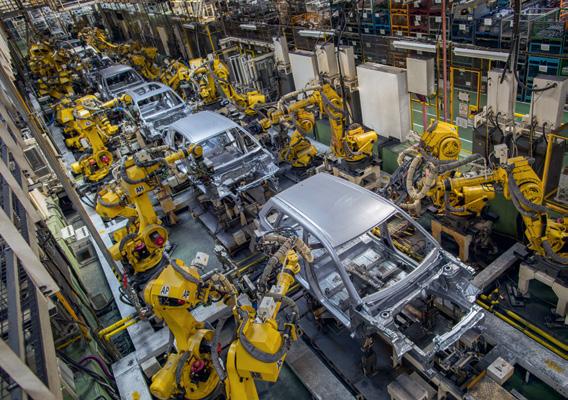
Magyar Suzuki Corporation is currently completing a large-scale multi-stage production development project launched in 2016 with three consortium partners (PPKE University, the Bay Zoltán R&D Institute and the Hungarian supplier PEMÜ) through a series of innovation-focused projects. The GINOP-2.2.1-15-2016-00015 development project, sponsored by the Hungarian government and the European Regional Development Fund, includes the networking of welding robots, modernizing the factory’s logistics system, preparing for the adoption of the latest laser welding technology and developing new, cost-effective polymers with excellent technical characteristics for motor vehicle production. As a result of these developments realized by the coordinated work of more than 100 experts, the company will be able to produce more advanced, more competitive and safer Suzuki prototypes by the summer of 2020.
economic interest but also its responsibility. Its activities need to show an example and a direction to players of the sector and the society, as well. Therefore, it has built the foundation of its CSR approach around three pillars: environment, society and economy. In addition to its employees and local communities, safety and education are the elements that the company plans to put special emphasis on in the long run.
Magyar Suzuki Corporation is responsible for the experimental development part of innovation –prototype production of domestically produced vehicles and model variants. This was so in case of its two latest models, the Vitara and the SX4 S-CROSS and their hybrid versions. Suzuki’s mission is to develop products of superior value by focusing on the customer. Thus, the Group is continuously striving for the development of environmentally benign products, as far as both their production and their later operation are concerned, at an affordable price. Along with the expansion of green and sustainable vehicle production, Suzuki Motor Corporation is also optimizing
As a responsible, law-abiding company and partner, Magyar Suzuki Corporation has focused on social responsibility, sustainability and innovation since the beginning of its existence. Its commitment and care towards its stakeholders and to its social and geographical environment is an essential part of its company culture. In cooperation with its partners, buyers, stakeholders and the community, Magyar Suzuki Corporation is striving to initiate and support programs that create shared value with these different groups.
As a leading automotive company, Suzuki believes sustainable efficiency is not only its

Magyar Suzuki, in line with current regulations and the mother company’s commitment, continuously strives to reduce the ecological footprint of its activities. Moreover, it conducts environment and health-conscious campaigns among employees in order to strengthen the sense of togetherness through educational and participatory experiences. In this spirit, Magyar Suzuki employees collected 32 kilograms of pills with expired shelf life, 14 kilograms of depleted batteries and 131 kilograms of second-hand clothing during a weeklong environmental protection action in the Suzuki factory. The clothing collected was distributed to those in need with the help of the Hungarian Charity Service of the Order of Malta. The hazardous waste was transported to designated sites.
Suzuki’s corporate mission is to make the experience of safe driving accessible to as many people as possible. Therefore, whether it is manufacturing processes, reliable vehicles or road safety, Suzuki and Magyar Suzuki Corporation are constantly working on ways to achieve the highest possible level of safety. That is why it optimizes its workflows with the help of its employees and partners regularly. Moreover, the Hungarian company cooperates with a number of regional aid associations, through which it aims to provide long-term education for the population.
It is less than half a year to the Tokyo Olympics. The Japanese are preparing innovative, environmentally friendly solutions for the Games that focus on sustainability. The President of the Hungarian Olympic Committee (HOC), Krisztián Kulcsár, has had reassuring, positive impressions in the island country and is confident regarding the chances of the Hungarian Team.

Japan has long-standing Olympic traditions. The country has hosted one summer and two winter Games. This year, the Olympic Flame returns to Tokyo after 56 years. Back in 1964, the Olympics hosted by Japan featured several innovations – Olympic events were broadcast by satellite for the first time and touch panel timing was introduced in swimming pools. The Japanese have been preparing for 2020 for about a decade; they are precise, innovative, creative, and everything is well-thought-out. HOC leaders have visited Tokyo on several occasions to review preparations, visit sites and facilities under construction, and are in constant discussions concerning the conditions awaiting the Hungarian Team. As Krisztián Kulcsár summarizes for Diplomacy&Trade, “we’ve had good impressions, we saw a high level of preparedness and readiness. As you arrive, you can immediately see at the airport, on the streets and even on taxis: the Olympic Games will be held here. Members of the organizing committee are very kind and helpful, and we are also grateful to Dr. Norbert Palanovics, Hungary’s Ambassador to Japan, for his help. I am sure that athletes and fans alike will be received by impeccable conditions. However, they should also be aware of the hot and humid weather as well as the seven-hour time lag; right-hand drive cars and special power connectors could be a novelty for them. The somewhat reserved and distant culture and traditions of the Japanese must be respected.”
The Japanese organizers are planning an environmentally friendly, sustainable Olympics. The HOC President points out that preparations
in this spirit are in line with the provisions of the International Olympic Committee's Agenda 2020. Last year, the British Standards Institution evaluated all activities related to the Games, and the Organizing Committee of the Tokyo Olympic and Paralympic Games was awarded the ISO 20121 International Standard and Certification for Sustainable Events. “Most of the sites will include temporary or pre-existing facilities, with large amounts of wood used in construction. The wheelchair accessible Olympic Stadium – built with sustainability in mind, inaugurated at the end of 2019 – greatly matches the green environment: thousands of trees and bushes were planted in the surrounding park. Medal podiums are being produced by using tons of recycled plastic. In order to produce the thousands of medals, a nationwide participation program was launched to recycle and recover precious metals from used cell phones. Energy for the sites and the Olympic Village is provided by renewable sources: wind and solar power, transport will be made greener by zero emission cars, and much of the material used in the Games will be recycled. The beds in the Olympic Village are made of heavy-duty cardboard. Even when purchasing paper, sustainability is a primary consideration. The implementation of the Games will be assisted by robots.”
At the end of 2017, the Governor of the Tochigi Prefecture, Tomikazu Fukuda visited Budapest and briefed the sports federations on the training camp options for Hungarian athletes. In line with an agreement the HOC signed with the Japanese Olympic Committee and Tochigi
Prefecture, Hungarian athletes will use the sports facilities as support offered by the Japanese, train with local partners and get acquainted with the sports technology, the competition venues and the Japanese environment.
Professional supervision at such trips is the HOC’s responsibility. Track and field athletes were among the first to sign up for this opportunity, followed by those in modern pentathlon, cycling, triathlon and rhythmic gymnastics. Some sports have partnered with other prefectures and cities, such as wrestlers with Maebasi city, Gunma Prefecture, and swimmers with Koriyama. For a long time, members of the Hungarian judo team have been working with a Japanese master and training partners. Japan organized a number of test competitions before the Olympics. Krisztián Kulcsár says these test tournaments have a dual purpose. “From the organizers' point of view, they are the main test events, there is still time to remedy any shortcomings; on the competitors’ side, the goal is to gain experience and become familiar with the circumstances – it is not necessarily the result that counts. These are good for acclimatization, experiencing competition conditions as well as climatic and natural conditions such as humidity, water quality, wind, waves, which are significant for canoeing or sailing athletes. Triathletes, for example, will need to prepare for an early start due to hot weather; organizers adjust the program to the heat in several sports. Cooling mist sprays, tents, wet wipes will also be used. Due to the expected heat in Tokyo, the marathon run will take place in Sapporo,” Krisztián Kulcsár highlights.
Ticket sales for events of Hungarian interest for the Tokyo Summer Games were launched at the HOC website olimpia.hu at the end of July last year. The HOC President says they are receiving more and more requests. “However, it should be noted that tickets are not cheap and we cannot meet all needs.” He recently stated that Hungarian sport had a good year before the Olympics. As for his expectations, he is optimistic, yet realistic. “Medals won in recent years in sports included in the Olympic program are encouraging; every year, the trend improves. I am satisfied with last year's eight golds but it should also be noted that many of our traditionally successful sports have not yet produced good results. I still consider the HOC Sports Directorate's forecast released one year before the Games as valid. According to the document, we expect a team of the same size as in Rio four years ago: 144-179 athletes. As of the end of January, we have 72 athletes who either acquired a quota or reached qualification level. The list of qualified athletes may change from week to week, the latest additions are the men’s water polo team who just won the European Championships; the men's epée fencing team also achieved great results at the beginning of the year. The number of Olympic participants from Hungary greatly depends on team sports: we have a lot of confidence in our water polo, handball and 3x3 basketball players. In the prognosis, we calculate with 13 medals and 24 Top6 rankings. Besides the traditional success sports for Hungarians, we may be pleasantly surprised in sailing, shooting or even wrestling,” the HOC President concludes.

Bridgestone Tatabánya Termelő Ltd. is increasing not only production capacity but also social responsibility in 2020. As a result of the firm’s investment program, a HUF 9.2 billion expansion was completed last September, under which a new 10,000 square meter warehouse for storing 180,000 tires opened, bringing the total storage capacity of the plant to 600,000 pieces. In the course of the development, the building acquired new training and changing rooms besides gaining additional production capacity. Thanks to this, 100 new jobs were created, which means that the Tatabánya plant now has close to 1,200 employees.

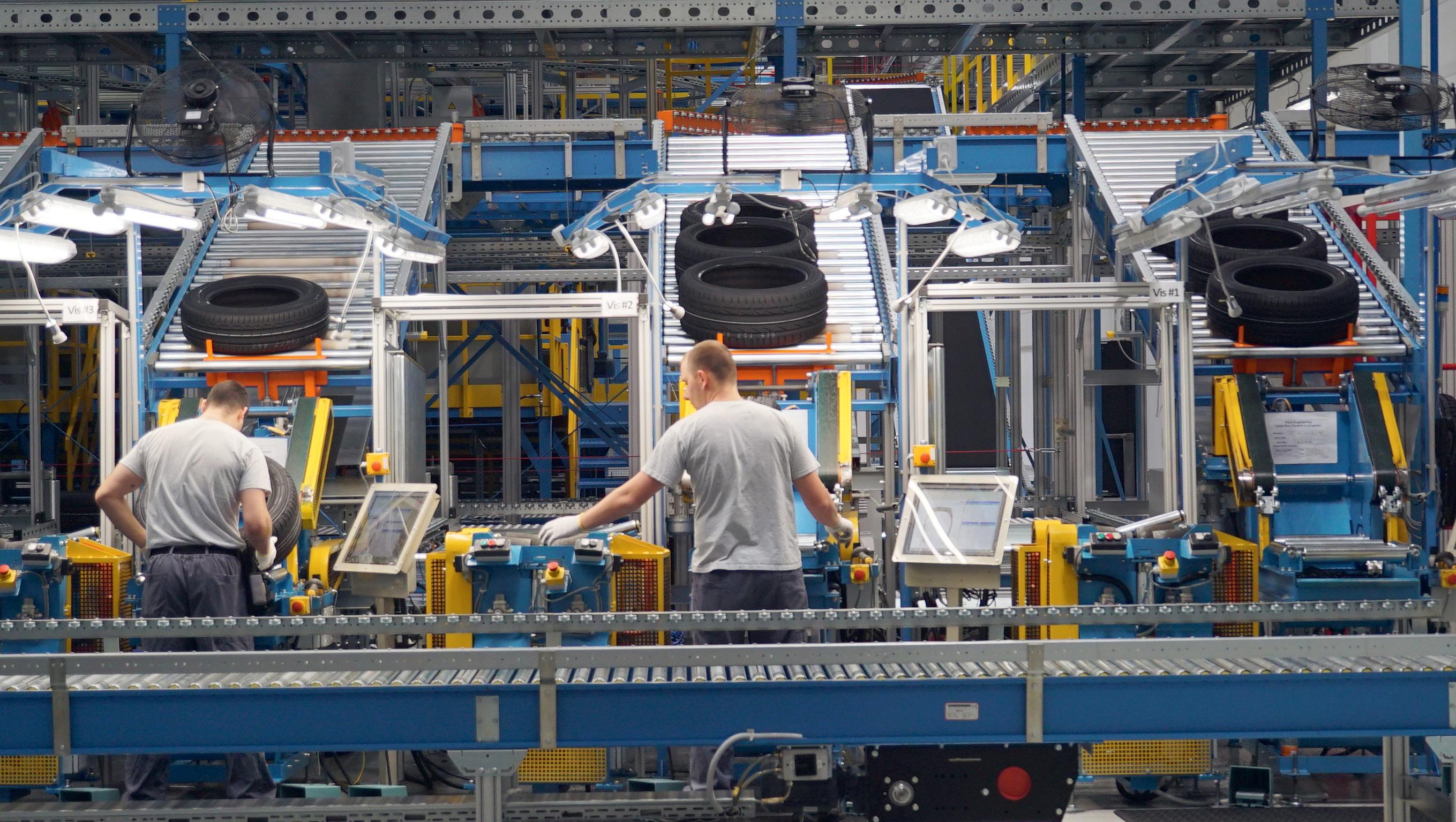
Bridgestone EMIA (covering Europe, Middle East, India and Africa) is investing EUR 36 million to convert eight European plants into smart factories by 2023. Bridgestone Tatabánya Ltd. will play an important part in this as it is one of the eight units where smart technology will be introduced into every phase of production by 2023, creating a smart factory. The technology affects monitoring and managing production, energy
supply, maintenance, and the production of semi-finished products. The Tatabánya plant will be the second Bridgestone factory in Europe to launch the smart energy system, which, while retaining the current number of employees, will lower energy consumption by 10%, increasing the efficiency of production. One of the project’s main objectives is to reduce, through the use of digital technology, the amount of energy, water and raw
materials used while enabling the continuous improvement of the quality of products.
The responsible employer
In addition to technological developments, over recent years, Bridgestone has paid special attention to creating a balance between work and private life for employees, and establishing a supportive environment. In 2019, a family day and free health screening tests were held in the tire factory, and a creative competition for the children of employees was announced. Apart from health insurance provided for employees as a benefit, the company sought to protect the health of staff by these and similar means, as well as to ensure carefree recreation and fun for them and their families. The activities were organized under the program ‘2019 – the year of the family and health’, which included outdoor, cultural and health promoting events for employees and their families as well as family-friendly work schemes. The success of these events and measures is demonstrated by the fact that the company won the ‘Exemplary and Responsible Employer’ title in March last year and three months later was awarded the Family-Friendly Workplace Prize, which meant that Bridgestone became one of the most attractive employers in Hungary. The caring company approach is clearly shown by the Employee Assistance scheme, which offers free legal, financial and psychological help by specialists to employees.
Corporate social responsibility is today indispensable for a modern large
multinational company. For Bridgestone, people living in the vicinity are highly important because the tire production company is also part of this community and thus strives to foster close relations with the nearby towns of Tatabánya, Tata and Környe. Last year, Bridgestone sponsored sporting and cultural events, such as the Gerecse 50 endurance hike, the Water, Music and Flower Festival in Tata, and the Spring Festival in Tatabánya. Additionally, the firm provided significant aid to the Tatabánya Vocational Training Center and the Tatabánya Ambulance Station.
Green road to the future
The company’s GreenStone program has striven to protect environmental and natural heritage since 2017. In the campaign, Bridgestone employees in Hungary take part in environmental actions each year. In 2018, they joined the ‘Pick It Up!’ movement, clearing litter from Kő Hill and the area surrounding the monument to the Turul, the eagle of ancient Hungarian mythology. In the same year, over 150 Bridgestone employees volunteered for landscaping works in the Danube-Ipoly National Park. The plant continued its environmental protection activities in 2019, again participating in the clean-up action as well as organizing a photography competition related to the topic for local residents. Recognizing the activities of the Tatabánya plant, the company headquarters in Japan awarded it the highest acknowledgement for environmental protection, the Gold Leaf Prize.
The company says the acceleration of this strategy will see six electrified models launched over the next 36 months, with the ‘Honda e’ and new hybrid-only ‘Jazz’ leading the way. According to Senior Vice President at Honda Motor Europe, Tom Gardner (see pictured), “the pace of change in regulation, the market, and consumer behavior in Europe means that the shift towards electrification is happening faster here than anywhere else in the world. As the pace of change continues to accelerate, we need to act sooner to meet these challenges head-on. I’m delighted to announce that all of Honda’s mainstream models here in Europe will be electrified not by 2025, but three years earlier, by the end of 2022, just 36 months from now.”

Honda also revealed its new 'e: Technology' branding, which will unify all electrified products from across the business under the same global name. For automobiles, as well as signifying the environmentally-friendly credentials of the product, the badging will denote the type of powertrain; ‘Jazz’ will be the first vehicle to carry the “e:HEV” branding, which stands for “Hybrid Electric Vehicle.” The advanced two-motor hybrid technology that will power the all-new Jazz hatchback has already


Honda is accelerating its electrification plans for Europe by moving forward its goal for all of its European mainstream models to feature electrified powertrains by 2022. The bold new target, recently announced during the 'Electric Vision' event in Amsterdam, is three years ahead of the previously announced 2025 goal, demonstrating the confidence Honda has in its electric and hybrid powertrain technology.
met with widespread acclaim across Europe for delivering high-levels of real-world efficiency and refinement in the 2019 ‘CR-V Hybrid’. Unlike traditional hybrids, where the electric motor assists the engine, in ‘Jazz e:HEV’ the engine produces electricity, which assists the motor. The result is the smooth ride and crisp acceleration of an electric vehicle matched to Honda’s unique control technology – offering outstanding environmental performance without compromising driver enjoyment. The next-generation ‘Jazz’ made its global premiere at the 2019 Tokyo Motor Show and will be available in 2020.
• Accelerated ‘Electric Vision’ strategy will see all Honda’s European mainstream models electrified by 2022, three years earlier than previously planned;
• New global 'e:Technology' branding revealed for all future electrified products in automobile, motorcycle and power product ranges;
• Six electrified cars to be launched over the next 36 months;
• Forthcoming ‘Honda e’ and hybrid-only ‘Jazz’ are key models for achieving emission goals for Honda in Europe;
• Honda and leading European energy supplier Vattenfall sign Letter of Intent to introduce flexible energy contracts, utilizing renewable energy and tailored specifically for EV users

Honda have also confirmed how it will reach this electrification ambition. Including the all-new ‘Jazz’ and ‘Honda e’, six electrified models will be launched for the European market in the next three years. This includes a further battery electric vehicle and a range of ‘e:HEV’ equipped models. As Tom Gardner put it, “this shift to electrification will change the face of our model line-up considerably. Our two-motor hybrid technology will be spread across the model range and we will bring further battery electric product to the market.”
In addition to announcements about its automobile range, Honda revealed the next step in its energy management business for Europe by announcing a collaboration with Vattenfall, a leading European energy supplier. This collaboration will allow Honda to provide the world's first flexible energy contract specifically tailored for electric vehicle (EV) owners in Europe. The partnership marks a key milestone for Honda in the development of the energy management solutions business that represents an important pillar of its ‘Electric Vision’ strategy in Europe. In a Letter of Intent, signed on October 23, 2019, the two companies confirmed their intentions to jointly develop and market a flexible energy contract that will allow EVs to be charged at the most cost-effective times, relative to grid demand. The tariffs, provided by Vattenfall – available to owners of any brand of electric vehicle (depending on vehicle compatibility) – also promote the use of electricity generated through renewable sources including hydropower and wind farms, realizing Honda's vision for sustainable future energy supply. This service will initially be launched in the United Kingdom and Germany in 2020, with other European countries to follow.
This key strategic partnership is the next step in Honda’s Energy Management Business in Europe which will ultimately proliferate the use of domestic power chargers, urban charging solutions, commercial energy services and advanced vehicle to grid (V2G) technology.
Vattenfall is a Swedish energy company, fully owned by the Swedish state. Its main markets are Sweden, Germany, the Netherlands, Denmark and the United Kingdom. As one of Europe’s leading producers of renewable energy, the company aims to enable a fossilfree life within one generation. Vattenfall operates numerous hydro-, wind- and solar power plants, including one of the world's largest offshore wind farms on the Isle of Thanet, at the most easterly point of Kent, in the southeast of England.
Keep on driving with superior control from the highway to the city, even in wet and rainy conditions.
Best-in-class Wet Performance
The highest rated tyre for braking and cornering in the wet*



Outstanding Label Grades

Full line up with EU Label Grade A for wet grip and B for rolling resistance
Bridgestone Tatabánya Manufacturing Ltd. www.bridgestone.hu


Superior Wear Life
Significantly improved mileage vs. predecessor**
 * Awarded highest rating for wet-weather braking and cornering by independent tyre testing and certification body, TÜV SÜD. Reference: Compared to the performance of 4 maincom petitors in the same segment: Michelin Primacy 3, Continental Premium Contact 5, Good Year Efficient Grip Performance, Pirelli Cinturato P7. Test carried out by TÜV SÜD on therequest of Bridgestone in April- July 2017 at ATP Papenburg on tyre size 205/55 R16 91V. Tyres purchased on the European market by TÜV SÜD. Test car: VW Golf 7. Report No. [713112819] ** Based on internal tests, 11% improvement on wear life vs. the predecessor product, the Bridgestone Turanza T001.
* Awarded highest rating for wet-weather braking and cornering by independent tyre testing and certification body, TÜV SÜD. Reference: Compared to the performance of 4 maincom petitors in the same segment: Michelin Primacy 3, Continental Premium Contact 5, Good Year Efficient Grip Performance, Pirelli Cinturato P7. Test carried out by TÜV SÜD on therequest of Bridgestone in April- July 2017 at ATP Papenburg on tyre size 205/55 R16 91V. Tyres purchased on the European market by TÜV SÜD. Test car: VW Golf 7. Report No. [713112819] ** Based on internal tests, 11% improvement on wear life vs. the predecessor product, the Bridgestone Turanza T001.
BUDAPEST FEATURES MANY RINKS – INCLUDING ONE THAT IS 150 YEARS OLD

 BY KRISTI
BY KRISTI
Before moving to Hungary, I thought of it as a southern country with warm weather through all seasons and no tradition of winter sports whatsoever. But I was wrong because one of the things that has definitely amazed me in Budapest is the passion for ice-skating.
I have loved ice-skating since my childhood. Growing up in Estonia, we often had nice cold winters and in my town, a natural ice rink was created every winter and this was a place for social gatherings with lots of fun for schoolchildren. But the real paradise for iceskating lovers I found in Helsinki while working at the Estonian Embassy there. They had a natural rink in every park during cold weather and once, we even had a staff meeting at a rink close to the Embassy. Of course, these are Estonia and Finland, both Nordic countries. But ice-skating in Hungary?... Well, this does not seem the obvious kind of entertainment to look for. But it is! During my first winter, 2018/19, I discovered this wonder world of Budapest.
Popular winter pastime
First, I made acquaintance with a small covered rink with artificial ice in the Marczibányi Square Sport Center close to my residence. Then, I realized that there are also other smaller rinks in the neighborhood. I think that nowadays, we do not have this many small local rinks in Estonia. Skating is perhaps less popular in Estonia because the winters are not as cold as they were and there are so many other activities to occupy oneself with. We have some large indoor ice-rinks in the bigger cities that one can use all year around. But indeed, in my hometown, a small outdoor rink is still being built every winter if the weather allows.
In Tallinn, one of the most charming places for skating is an outdoor rink in the old town that is very popular among both locals and tourists. While moving to Budapest, I was ignorant enough to leave my skates in Estonia, so I had to organize to get them here as quickly as possible. I started to enjoy the charming atmosphere of the cozy little ‘home rink’ in my neighborhood, and there I saw many children with very professional skating skills. Some of them had obviously been trained but the others could also skate around with high speed and great confidence. And I was amazed at those dedicated parents bringing very young kids to
the ice, I would say even in the age of two or so. This was something I had not really experienced in Estonia. So far, I had seen only in Finland that kids sometimes learned skating before they learned to walk. But Finland is a different story – a country covered by ice most of the year and well-known for its world class ice hockey. But who would expect children at the age of two or three years learning skating in Hungary?
THE rink
In the Hungarian capital, THE rink is, of course, the Városligeti Műjégpálya (City Park Ice Rink) on the City Park Pond. It claims to be the largest open-air ice rink in Europe (another largest something, there are a lot of those in Hungary). It is definitely one of the oldest in Europe, as it was solemnly opened by Crown Prince Rudolf back on January 29th, 1870 and thus, it celebrates its 150th anniversary just this year! That tells a lot about the very long tradition of ice skating in Hungary. A beautiful building with the changing and dining rooms for the skaters was built at the end of 19th century and is still in use for the same purpose. The surroundings are beautiful, as the pond is right next to – actually is part of – the City Park with its impressive buildings that were constructed as monuments
for the millennium celebrations of the Hungarian State in 1896. The most magnificent of them, overlooking the ice rink, is the Vajdahunyad Castle that features copies of several landmark buildings from different parts the Kingdom of Hungary, especially the Hunyad Castle in Transylvania (now in Romania). As the castle contains parts of buildings from various time periods, it displays different architectural styles: Romanesque, Gothic, Renaissance and Baroque. Besides the café with a terrace in the ice rink building, there are also smaller huts selling warm-ups like kürtöskalács (‘spit cake’ or ‘chimney cake’) and forralt bor (mulled wine). No wonder that the place is so popular among both Hungarians and foreigners. One of the downsides of the popularity is that the rink is over-crowded on weekends. Nevertheless, as it is so huge, you can still always make your way on the ice among the crowd.
And there’s more…

One special feature that definitely adds to the enjoyment of skating in Budapest, is the weather. Here, I must confess that I do not miss too much the dark grey days of Estonian winter. What a great feeling it is to glide on the ice with blue skies and sun shining sometimes very warmly even in winter. The evenings have a good energetic mood, as well. As the beautiful lights illuminate the space and a real DJ plays great music, you feel yourself so young and energetic!
Although, I love going to Városliget again and again, I am also curious to learn about other splendid rinks around Budapest. Quite a special place to discover finds is on Csepel Island in District XXI. Next to Szent Imre Square, there is a rink that also consists of the curved ice corridor. This place is probably less known among those who do not live in the area but it is worth visiting; it gives you somewhat different possibilities to test and develop your skating skills.
Although, Városliget is huge, it would be nice to try skating even on a larger square… In Helsinki, people skate on the sea-surface and it is also possible in Estonia – when the weather is cold enough, even the largest lakes become frozen and you can use them as ice-rinks. There are even open-air long distance competitions organized on lakes. I have also heard about skating on Balaton. So far, this still has to be discovered by me. Maybe next winter?
THIS SERIES, DIPLOMATS SHARE PERSONAL ACCOUNTS OF THEIR EXPERIENCES ON “EXCURSIONS” into Hungarian culture, art, gastronomy & scenery.


JÁNOS IRINYI AND HIS IGNITING LITTLE STICK
(a note on Valentine’s day)






Valentine Day is coming up soon. Some of us will receive dinner invitations, others will snuggle in intimate little corners with candles lit everywhere…and I just felt enlightened for a moment: let’s dedicate an article to the ingenious János Irinyi, who invented the safety match. Especially that legend has it: love induced the outstanding Hungarian chemist to come up with his big idea.

János Irinyi was born on May 17, 1817. He was brought up in a Transylvanian village called Nagyléta, attended secondary school in Nagyvárad and was a student of law at the College of Debrecen, Hungary. He studied chemistry at the Vienna Polytechnic. In 1836, a grand explosion occurred at the university during an unsuccessful experiment of one of Irinyi’s professor named Meissner. It was then that Irinyi began to ponder how noiseless and safe matches could be produced, considering that at the time. the striking of matches was accompanied by a loud bang and flame, causing fire and burns. Irinyi tried to replace potassium chloride with lead dioxide in the phosphoric heads of matches, and…it worked. This is how he invented noiseless safety matches. He was 19 at the time, and, according to legends, was deeply in love with a girl named Eliz, daughter of the match factory owner István Rómer, who produced very noisy matches, which Eliz heard bursting too many times and which she was terribly scared of. What does a young man do to comfort his girl? He invents the safety match. He also approached Eliz’s family and proposed to her. The father agreed,
adding, allegedly, that since his great invention existed it should also be included in the family enterprise. Rómer and Irinyi sat down to incorporate both properties – the invention and the girl – in the contract. They signed, but in the end, somehow, Irinyi was left with neither matches nor girl. Later in 1839, Irinyi established a match factory in Pest to manufacture “such igniting little sticks produced without sulphur, thus not resulting in any smell or noise”. This was the industrialization movement of the Hungarian age of reforms. The factory prospered and manufactured half a million matches a day, until the 1848 revolution, which Hungarians commemorate next month on the 15th, put an end to it. (János Irinyi, by the way, together with his brother József, helped word the famous 12 demands asserted during the outbreak of the revolution, along with other noteworthy Hungarians such as poet Sándor Petőfi and author Mór Jókai.) By the order of newly appointed Minister of Finance Lajos Kossuth, Irinyi worked at the gunpowder and cannon factory of Nagyvárad. After the war, he was imprisoned and then was released in 1850 under an amnesty. He started managing his family’s estate in Vértes investing all his fortune in agricultural experiments and lost everything. For the following two decades, he worked in the Debrecen steam mill and died on December 17, 1895.
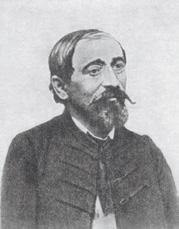
THE GOAL AT ROCHE HUNGARY IS TO PROVIDE BETTER CARE FOR PATIENTS
‘Doing now what patients need next’ – figuring out ways to implement this motto at Roche (Hungary) Ltd. is not the job of soothsayers but of talented innovators at the four divisions (Pharmaceutical, Diagnostics and Diabetes Care divisions as well as the Roche Services & Solutions Operations EMEA) that represent the Swiss international pharmaceutical company in Hungary.
As Irma Veberic, General Manager at Roche (Hungary) Ltd. tells Diplomacy&Trade, their commitment is to close the gap between the Hungarian and European patients’ health outcomes by building partnerships with Hungarian patients and the healthcare system’s stakeholders, utilizing Roche’s portfolio and beyond. “As a company,


We launched new revolutionary reagent concept in coagulation and became the first company to offer ready-to-use reagent to customers in this field. We were also pioneers in molecular diagnostics with high-throughput, fully automated solutions used, for example, in blood banks,” adds the Division’s General Manager, Lajos Hodossy. Of course, the human factor, including teamwork, behind the solutions is also important. “Leaders, team members, employees are all empowered to make decisions – I do not think that I myself have all the information or knowledge to make the best decisions,” Roche Services & Solutions Operations EMEA General Manager Eve Bader stresses. She mentions that two years ago, a Transformation Office was created that received the mandate to capture ideas from employees, evaluating what solutions are feasible to deliver efficiency. As regards innovative solutions at Roche Diabetes Care, this division is pioneering innovative diabetes technologies and services for more than 40 years worldwide. It collaborates

with caregivers, healthcare providers and payers to optimally manage this complex condition and contribute to sustainable care structures. “Under the brand Accu-Chek and in collaboration with partners, Roche Diabetes Care creates value by providing integrated solutions to monitor glucose levels, deliver insulin and track as well as contextualize relevant data points for a successful therapy,” according to the General Manager of the division, Beáta Szabadszállási.

Roche is the world’s largest biotech company, with truly differentiated medicines in oncology, immunology, infectious diseases, ophthalmology and diseases of the central nervous system. Roche is also the world leader in in-vitro diagnostics and tissue-based cancer diagnostics, and a frontrunner in diabetes management. More than thirty medicines developed by Roche are included in the World Health Organization Model Lists of Essential Medicines, among them life-saving antibiotics, anti-malarials and cancer medicines. Moreover, for the eleventh consecutive year, Roche has been recognized as one of the most sustainable companies in the pharmaceuticals industry by the Dow Jones Sustainability Indices (DJSI).
The majority of our trails are still in oncology, but we are also entering more into neurology and ophthalmology areas, as well. Most importantly, Roche made payments totaling to HUF 1,946 million (USD 6.5 mn) and generated cost savings of HUF 6,161 million (USD 20.5 mn) for the Hungarian drug budget,” Irma Veberic points out.
Comprehensive therapeutic solutions
Diabetes is one of the most common chronic diseases in the world. In Hungary, one in every 12 people has diabetes or abnormal sugar metabolism, about 850,000 diabetics are registered and their numbers are constantly increasing by 5-10% per year. The goal at Roche’s Diabetes Care Division is to identify diabetes early and provide modern therapy to prevent the serious complications as soon as possible. “Our insulin pump and its infusion sets and several additional services (e.g. patient education program, online diabetic & dietary training, 7/24 customer service) offer comprehensive therapeutic solutions to improve the quality of life of the Hungarian insulin treated patients,” Beáta Szabadszállási explains.
Roche will strive to leverage prevention and early detection with appropriate screenings and diagnostics, and then deliver innovative therapies. While the quality of care is rather good in the hospitals, there must be a national focus on getting patients there earlier. In this regard, Roche can play an essential supportive role throughout the entire patient pathway. At Roche, we already have a strong diagnostics business unit in addition to pharmaceuticals. What we are doing is educating doctors and sharing best practices from other countries with pathologists.”
A fine example of innovative solutions is the Diagnostics Division that focuses on fully automated laboratory systems. “In this system, the measure of parameters is performed without any human interaction, from pre-analytics till post-analytics.
“Every person is unique and, in many ways, so are diseases. Yet, the digital revolution in healthcare provides new ways to collect highquality data from each patient and connect it to data from large pools of other patients for analysis with artificial intelligence-based algorithms. This enables us to arrive at a deeper understanding of how to treat an individual. Only then we can see what distinguishes each of us as individuals, and translate that into personalized and thus, improved care for every person,” Irma Veberic explains. Patients with the same diagnosis may react to a treatment in different ways, so, a strategy that aims to fit the right treatment to each patient in the best way possible. Thus, personalized healthcare (PHC) has the potential to further improve the efficacy and safety of treatments by understanding of differences among patients, the molecular basis of disease and how medicines work, she stresses.
Investment in R&D
Roche is an established and important contributor to the Hungarian economy, investing three-quarters of its domestic revenue back into the country each year. In 2018, this generated a total contribution to Hungary’s GDP of HUF 23 billion, or appr.
0.05% of the total GDP. Roche involved nearly 800 Hungarian patients in clinical trials across 150 sites. “In total, we conducted 82 research studies across six therapeutic areas: oncology, immunology/inflammatory disease, neurology/psychiatry, pulmonology, hematology/nephrology and ophthalmology.
All for the same goal
Staff at Roche Services & Solutions Operations EMEA work to support the eventual aim of providing a better care for patients. “We are customer-centric, we focus on exceptional delivery and have an E2E focus. Providing services this way in the operations of Finance, HR, IT and Procurement will allow our 120 affiliates to fully focus on customers on the markets. At the end of the day, knowing that everything we do helps our colleagues ‘Doing now what patients need next’ gives us a great satisfaction,” Eve Bader points out.
“All of us expect that trough continuous work, with more discussion between the industry and the health authorities, the Hungarian mortality rate to drop significantly and reach the best life span in Europe,” concludes Irma Veberic.
Jamnica plus, in business over 190 years, is the largest Croatian producer of mineral waters and non-alcoholic drinks. It is also one of the most modern European manufacturers of mineral waters and non-alcoholic drinks with extensive investments in modernization, development and new technologies. The company boasts a total annual production of more than 500 million liters, which makes it the biggest drinks producer in Southeast Europe.
The company’s production capacities are located in Croatia (in Pisarovina and Sveta Jana), in Bosnia and Herzegovina (in Kiseljak), Serbia (in Trstenik) as well as in Hungary (in Fonyód on the shore of Lake Balaton). Thanks to the top quality of its products and to its well-organized distribution network, Jamnica plus is a leading bottler of natural mineral waters and ice teas in Croatia and in Bosnia and Herzegovina. Jamnica and its affiliates are also present, with well-known brands, in the Czech Republic, Hungary, Macedonia, Montenegro, Serbia, Slovakia and Slovenia as well as another twenty foreign markets, which shows that, in addition to a strong presence in the region, the company bases its longterm business strategy on strong export orientation.

The leading brand
The most important export brand, Jana, is today being drunk from Los Angeles in the
United States of America to Dubai in the United Arab Emirates. Jana was introduced on the Hungarian market in the year 2005. After non-carbonated mineral water, Jana was the first brand to introduce the flavored non-carbonated water category in Hungary as was their Baby water, and later expanded its portfolio to ice teas and vitamin waters.
The company’s carbonated waters (Jamnica, Sarajevski kiseljak, Mg Mivela and Fonyódi) and non-carbonated waters (Jana, Akvia, Fonyódi and Goda) are distinguishable, and both groups of waters have their own flavored versions.


At the same time, non-alcoholic beverages from the sales portfolio of Jamnica are divided into non-carbonated beverages (ice tea), sports drinks (isotonic drinks) and carbonated beverages (cola and other flavors).
A nectar from the deep Jana, loved all over the world, emerges from 7,000 years ago when nature was completely intact. Hidden at the depth of more than 800 meters, it preserves original life values. The first encounter of Jana with today’s world occurs the moment the bottle is opened, when its values become part of those who drink it. Due to the extraordinary depth from which it is drawn, from under old dolomite rocks, it is characterized by an extraordinary mineral composition in which the ratio of calcium and magnesium is particularly important. On its thousand-year journey from under the ground through layers of mineral rocks, Jana becomes naturally rich with minerals, which gives it a unique and recognizable silky taste. The state-of-the-art bottling technology enables the natural mineral water to be filled







from the depth of 800 meters directly into the bottles without any external influence, maintaining its original natural pureness. In humans, water contributes to normal cognitive functions, while insufficient hydration results in poor concentration, fatigue and headache. Therefore, proper water intake is a good way of overcoming intellectual challenges. Water contributes to normal bodily functions and thermoregulation, which is of great importance to both professional and recreational athletes. Exercise can result in extreme water loss through sweat, which can amount to more than a liter per hour. As the production company says, “Jana is the perfect companion for natural hydration in every situation. One of the best ways to contribute to adequate hydration is to always carry a bottle of Jana with you.”
Jamnica plus has bottling plants in the region according to the following assortment:
• Pisarovina, Croatia: natural mineral water Jamnica, Sensation, Prosport
• Sveta Jana, Croatia: natural mineral water Jana, Jana Ice Tea and Jana vitamin as well as Jana flavored water

• Kiseljak, Bosnia and Herzegovina: natural mineral water Sarajevski Kiseljak, Sensation, non-alcoholic drinks as well as Sky and SKI carbonated soft drinks
• Trstenik, Serbia: mineral water Mg Mivela
• Fonyód, Hungary: mineral water Fonyódi and Akvia

The President of the Republic of Hungary, János Áder held his annual New Year Reception at the Palace of Arts for diplomats accredited in Budapest. In his speech, he voiced his opinion that “it is the most beautiful tradition of Europe that each country shapes its future with their own past experience and national goals, accepting European values.”






To celebrate the day of international recognition of the Republic of Croatia and introduce the Croatian Presidency of the Council of the EU, the Ambassador of Croatia, Mladen Andrlić held a reception at his residence in Budapest in January. A special speaker of the event was the Finnish Ambassador, Markku Virri, representing the previous EU Presidency held by Finland in the second half of 2019.










The Ambassador of the Argentine Republic, Maximiliano GregorioCernadas and his wife hosted, at their Budapest residence, an introduction by the Argentine operatic star of world fame, José Cura, of his own world première composition, the comic opera 'Montezuma and the ginger priest', followed by musical excerpts.





In celebration of the 70th anniversary of his country’s Republic Day, the Ambassador of the Republic of India, Kumar Tuhin invited fellow diplomats, Indians living in Hungary and special guests for a reception that included musical performances and dinner at the Hungarian Heritage House in Budapest. The event honored the date on which the Constitution of India came into force on January 26, 1950.


The new ambassador of the State of Israel to Hungary, Yakov Hadas-Handelsman presented his credentials to Hungarian President János Áder at the Sándor Palace in the Buda Castle in January.



The Embassy of the Socialist Republic of Viet Nam and the Association of Vietnamese People in Hungary welcomed guests to a reception at the Hotel Gellért in Budapest to celebrate TET –Lunar New Year and the 70th anniversary of diplomatic relations between Viet Nam and Hungary.



The Embassy of Peru invited guests to attend the opening of the photo exhibition ‘The Miracles of Peru’ in the D18 Café in Budapest. The photos were taken by the Hungarian photographer Mónika Merényi on her voyage to the South American country.







THRU THE YEAR, MONTHLY
Budapest’s Museum of Fine Arts offers numerous new ways of exploring – and learning about – fine arts. Discovering something unique and personal about a work of art is what makes it interesting and memorable to us. It is in this endeavor that the museum calls on other forms of art: dance, theater, literature, classical and pop music, fashion design, gastronomy, and countless other fields of art, within their framework of special programs, offering guided tours, workshops and many other activities. During the Museum+ evenings (on one Thursday each month), the museum opens its doors to those who would like to explore the old and new masterpieces of the permanent collection during evening hours. For the larger temporary exhibitions, special opening or ‘finissage’ events are organized. www.szepmuveszeti.hu






FEBRUARY



This is the biggest boat exhibition in Hungary, the opening event of the sailing, boating and water sport season. The annual exhibition attracted over 8,000 people last year. During the four days of this year’s show, exhibitors will present up to a hundred sail, electronic and motorboats, countless accessories, sail brands and services, along with the latest developments in boat engineering and boating accessories. Just like last year, the exhibition will be organized in co-operation with the annual Travel Exhibition, featuring a great number of travel agencies, domestic and foreign tourism operators, along with countless theater and dance shows on stage, a Blogger Corner and an Africa-themed forum.
www.hungexpo.hu




APRIL 1, BUDAPEST SPORTARÉNA
Since emerging with his album ‘Back to Bedlam’ in 2004, and the incredible successful single ‘You’re Beautiful’ (which became No.1 in several countries), English singer-songwriter James Blunt has sold over 23 million albums worldwide and has showcased his wit and charm more recently with his always engaging twitter account. Blunt is now on tour with his sixth studio album, ‘Once Upon a Mind’, which kicked off this month in Birmingham and will close at London’s Royal Albert Hall, playing shows across Europe throughout the run. After flirting with electronica on his previous album, James Blunt returns to what he does best on his new album, writing classic songs that touch both the heart and the head. Highlights are many and include the breezy first single ‘Cold’, the poignant ballad ‘Monsters’, the pop swagger of ‘5 Miles’ and the country tinged ‘Halfway'. Discover them live at the Budapest concert! www.livenation.hu

FEBRUARY 12, TRAFÓ
The Eurohumanoids of STEREO AKT had organized a focus group research with the help of local citizens in order to understand an average European person’s desires, nightmares and sins. Through their observation, we may be able to understand what should be the next move: is cosmetic intervention, facelift or reanimation that is needed? The live-composed visuals and acoustics, coupled with the variety of non-professional everyday people in the focus group make this event vivid, spontaneous and fresh night after night. The audience is not only an observer but a co-creator of this unconventional research. The unconventional theatrical experiment puts our democracy under the microscope: will we collectively discover a way to resuscitate the dream of Europe? www.trafo.hu











The Harlem Globetrotters are legendary worldwide, synonymous with one-of-a-kind family entertainment and great basketball skills for the past 93 years. Throughout their history, the Original Harlem Globetrotters have showcased their iconic talents in 124 countries and territories on six continents, often breaking down cultural and societal barriers while providing fans with their first-ever basketball experience. Proud inductees of the Naismith Memorial Basketball Hall of Fame, the Globetrotters have entertained hundreds of millions of fans – among them popes, kings, queens and presidents – over nine thrilling decades. They are currently preparing for their 94th year of touring with the 2020 “Pushing the Limits” World Tour, during which the team will play at more than 250 North American venues, as well as in more than 30 countries worldwide, including Hungary. The all-new tour will feature new high-flying dunks, hilarious stunts, a new record-breaking attempt and unforgettable family moments. www.broadway.hu

FEBRUARY 20, BUDAPEST


Las Vegas-based multi-million record selling heavy metal band Five Finger Death Punch will celebrate the release of their 8th studio album ‘F8’ on February 28, with their biggest European arena headlining tour to date. Multi-platinum legends Megadeath will join the lineup as the special guests. Support will come from Bad Wolves, the global breakthrough rock sensation of 2018. “We had an extremely successful, yet tumultuous couple of years as a band. We didn't just weather the storm but came out on the other side better than ever. It was a focused sober group recording, our most important album to date and, without a question, it shows. This album represents rebirth, progression, transcendence both personally and musically,” says Hungarian-born American musician (and martial artist) Zoltan Bathory, founder, rhythm guitarist, and one of the main songwriters for the band. www.livenation.hu

FEBRUARY 20-25, MOHÁCS,160 KM SOUTH OF BUDAPEST
Busójárás, a pagan Hungarian ritual, is the symbolic ‘burying’ of winter and the welcoming of spring. The annual, six-day fest involves folk music, dance and parades featuring the Busós, people wearing traditional masks and sheepskin vests or jackets as costumes resembling monsters from Hungarian folk tale heritage and typically carrying large wooden noisemakers or cowbells and make quite a racket. As a highlight of the march, the Busós make their way to the bank of the River Danube where they set afloat a coffin, containing a Busó costume. On the very last day of the festival, they burn another coffin on the main square of the town. The festival’s roots are based in the legend that many soldiers and locals allegedly escaped to Mohács Island after the defeat of the Hungarian army in 1526. They were able to drive the invading Turks away from their new home by dressing up in Busó costumes and masks; the Turks ran away in panic and fear. Busójárás has gone through changes in past years, losing some of its traditional elements. Yet, it has managed to preserve its basic symbolism. “The municipality of Mohács does everything to preserve these traditions for future generations, and not to let the festival turn into some wacky old bazaar,” organizers say. www.mohacsibusojaras.hu







The Black Food Festival, a project started by Hungarian food enthusiasts, is on an international tour and will arrive in Budapest’s OFF Kultur (in District 4) on March 21. Traditionally the Black Food Festival is about dark and black food & drinks, but there’s so much more to it: the fest celebrates creativity and openness. Inviting guests to try something new and unusual, the traveling festival offers black design and fashion items, dark music – a very special atmosphere to be enjoyed by anyone, not only goth people.

The international tour kicked off in Berlin. The next stops were Tel Aviv and Helsinki, followed by New York, taking Brooklyn by storm. Then came Istanbul, London and Nairobi in Kenya, one of the most open and rapidly developing countries in Africa. It seems that the concept – which can be adapted – is wildly popular in all kinds of cultures. The first franchise event was in Tallinn, visited by no less than 4,000 guests. In Budapest, guests will be encouraged to taste savory dishes, vegan, sugar-free, lactose-free and gluten-free
dishes, and various kinds of street food: black hamburger, black tortilla, black chili sauce, black beer, black coffee by Caffé Perté, black churros, black ice cream and black cakes. A wide assortment of dark macarons will be also available. Get ready for some major surprises, too: black cocktails with real locusts, and special, rarely seen dark fruits and vegetables. A panel of expert judges will choose the most delicious food and drink and will hand out the ‘Black Food of the Year’ and the ‘Black Drink of the Year’ awards.
1146 Budapest, Városligeti tó (City Park) +36 1 422 0222 www.robinsonrestaurant.hu
ROBINSON IS LOCATED ON A SMALL ISLAND, in the most beautiful park of Budapest. The moment it opened in 1989, it quickly earned popularity among the citizens of the capital as well as the tourists. Numerous celebrities including Schwarzenegger, Stallone and David Bowie, have tasted the delicacies prepared in Robinson’s kitchen. The restaurant is popular thanks to the seductive mood of the terrace built on the lake, the light French cuisine prepared by the new Executive Chef Dávid Kugyela, and the steakhouse upstairs. Do not miss the Tuscan master Dario Cecchini’s steaks cooked on charcoal.
• Cauliflower panna cotta, prawns, kumquat
• Jerusalem artichoke consommée, smoked sturgeon, quince
• Dario burger 4.0 (bacon, cheddar, jalapeno, roasted onion, 250g Dario meat)
• Suckling pig belly, pumpkin purée, citrus lentil ragout, pickled Roman salad
• Cottage cheese tart with dill, lemon ice cream, fennel jam
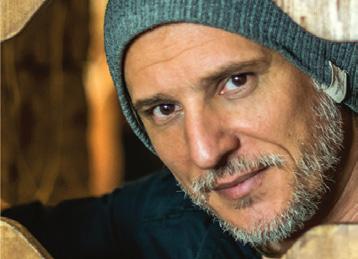
Pékség + Reggelizőhely + Osteria 1051 Budapest, Sas utca 12. +36 30 150 7073 bazilika.panificio@gmail.com



OSTERIA BY PANIFICIO IL

BASILICO is the hottest novelty in downtown Budapest.

The mix of a cosy breakfast place and an authentic Italian osteria, which provides prime dishes, like freshly baked focaccia and handmade pasta with seasonal toppings. If you’re short on time, grab something from a wide sortiment of bakery goods and sourdough breads, made by the high-end bakery. The man with a clear vision about splendid hospitality behind Panificio il Basilico, is Szabolcs Szabadfi or as people mostly call him, 'Szabi, the baker'.
RECOMMENDATION
• Sourdough bread and bakery goods
• Porchetta
• Handmade pastas

• Focaccia
• Duck leg confit
THE RISE OF A MULTIFACETED GRAPE VARIETY

e popularity of Furmint is on the rise and this indigenous variety of the Carpathian Basin takes center stage in February. Furmint can yield so many di erent styles: sparkling, light, refreshing, dry, more substantial, barrel aged and, of course, sweet wines ranging from late harvest to szamorodni and aszú. With such variety, it’s no wonder that beginners and connoisseurs alike can nd Furmints to delight their senses.
The origins of Furmint are still unclear but, considering that it was mentioned as early as 1611 in connection with Tokaj, it seems well justified to call it a Hungarian variety. Before the Phylloxera epidemic (1874-1914), several different versions of Furmint were cultivated all over Hungary but after the devastation it was pushed back to Tokaj and Somló. Thanks to its recent revival, today there are significant plantations in Eger, Mátra, at Lake Balaton, in Pécs and on the Great Hungarian Plain. Furmint is also planted in the neighboring countries of Slovakia, Austria, Slovenia, Croatia, Serbia and Romania. Some overseas countries have also started experimenting with the variety. In fact, Furmint was long considered a variety for producing sweet wines. This view remained unchallenged until around 2000. It was in this year that the first premium quality single vineyard dry Furmint was produced. The shift was only
Kálvária Wine Cellar offers you

• a wide selection of local varieties
• tailored private tastings in the cellar
• a couple of thousand bottles of old wines (i.e. bottled more than 5 years ago) in stock
• professional tastings conducted with winemakers and experts
There is an outstanding supply from Mátra and Tokaj wine region, as well as a great selection of Kékfrankos, Kadarka, Furmint and Aszú wines in the cellar. Come and taste with us!



2011 Budakalász, Kálvária utca 5. Telefon: (+36 30) 297 2306 facebook.com/kalvariapince
partly motivated by international trends. While dry Furmint can be produced every year, szamorodni and aszú require special weather conditions. The two styles complement and strengthen each other, and recently dry Furmint has become a wine for everyday consumption.
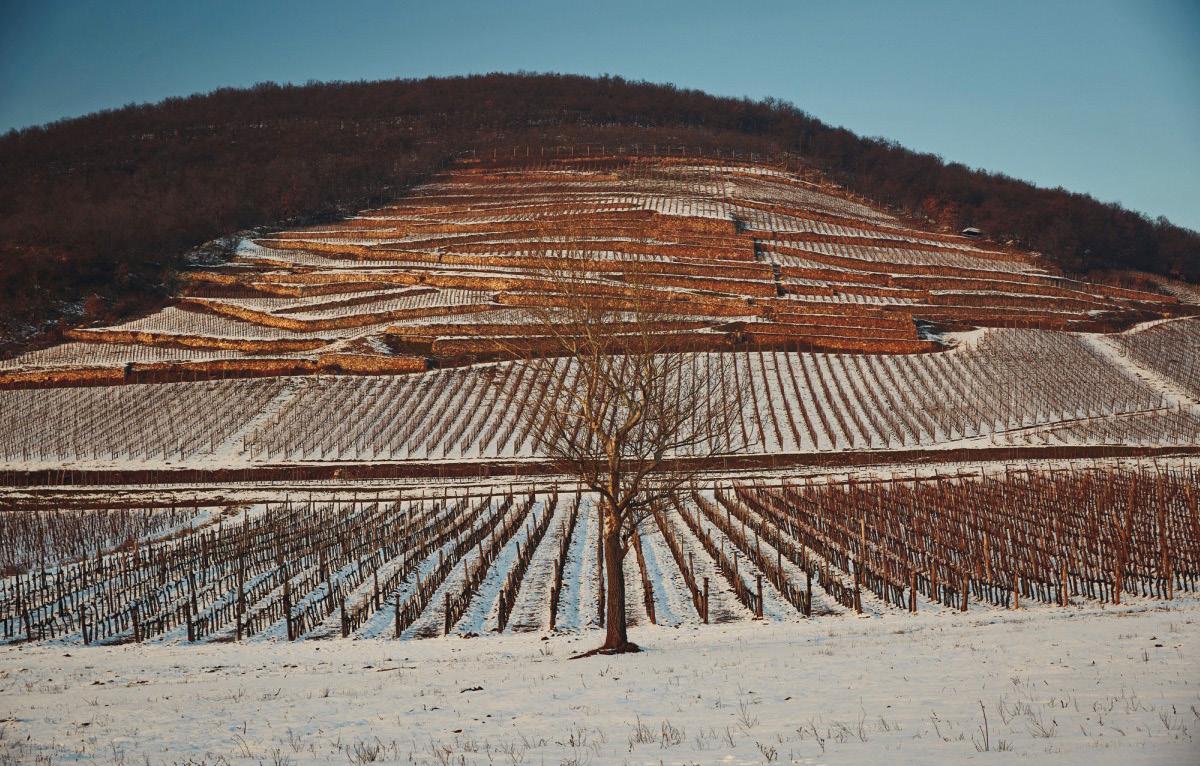
A variety with neutral aromas, Furmint is a great transmitter of terroir. It thrives on volcanic, chalky soils and the mineral character of the terroir is reflected in the wine. It preserves its vibrancy even in hot vintages and late harvested and botrytised berries also retain this trademark acidity. This is one of the reasons Furmint yields such age worthy wines, in fact, the longevity of aszús is almost unparalleled in the world of wine. Its susceptibility to rot, a quality that in the case of other varieties is a distinct drawback, becomes a benefit: when infected by Botrytis cinerea the berries shrivel and dehydrate and these ‘aszú berries’ are the key to crafting the
world’s most expensive to produce natural sweet wine, Tokaj Aszú.
A universal grape variety that enables winemakers to adapt it to the style they desire: racy sparkling wines, lithe wines for everyday consumption, broad and complex single vineyard bottlings, sweets of all kinds – Furmint is a variety for all seasons. Elevation in steel tanks or wooden barrels fit it alike and there are promising experiments with amphoras. Furmints are often characterized by notes of apples, pears, quince, flowers, peaches, citrus, honey, herbs and sweet spices complemented by a distinctive saline, mineral streak. Barrel aged examples show the classic aromas of vanilla, smoke and tobacco. Due to its diversity, it offers countless food matching possibilities. Bright, fruit forward types go well with fish or dishes with herbs and vegetables. More substantial Furmints with some bottle age are great with game bird or even steak.

DON’T DRINK AND DRIVE
